- Ebooks & Courses
- Practice Tests

How To Write an IELTS Process Diagram Essay
An IELTS process diagram question can contain a wide variety of different types of graphics. It could be a natural process such as the water cycle, a manufacturing process or a diagram of a system.
Using these 5 steps will help you to write a high-scoring process diagram essay:
1) Analyse the question
2) Identify the main features
3) Write an introduction
4) Write an overview
5) Write the details paragraphs
In this lesson, we’re going to work through the 5 stages step-by-step as we answer a practice question.
Before we begin, here’s a model essay structure that you can use as a guideline for all IELTS Academic Task 1 questions.
Ideally, your essay should have 4 paragraphs:
Paragraph 1 – Introduction
Paragraph 2 – Overview
Paragraph 3 – 1 st main feature
Paragraph 4 – 2 nd main feature
We now have everything we need to begin planning and writing our IELTS process diagram essay.
Here’s our practice question:
The diagrams below show a structure that is used to generate electricity from wave power.
Summarise the information by selecting and reporting the main features, and make comparisons where relevant.
Write at least 150 words.
Generating Electricity From The Sea
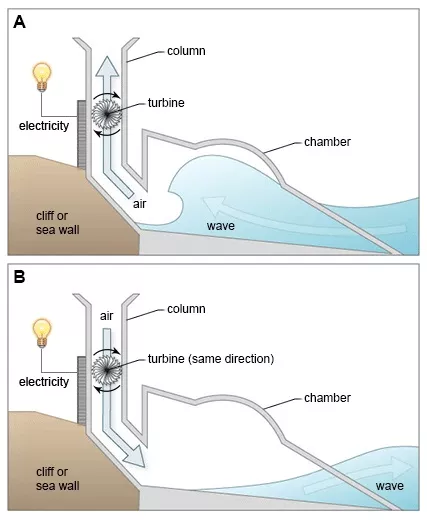
Source: Official website IELTS Essentials
Step 1 – Analyse the question
The format of every Academic Task 1 question is the same, with the instruction sentence (highlighted below) identical in every question. Here is our practice question again.
Every question consists of:
- Sentence 1 – A brief description of the graphic
- Sentence 2 – The instructions
- The graphic – diagram, chart, graph, table, etc.
Sentence 2 tells you what you have to do.
You must do 3 things:
1. Select the main features.
2. Write about the main features.
3. Compare the main features.
All three tasks refer to the ‘ main features ’ of the graphic. You do not have to write about everything. Just pick out 2 or 3 key features and you’ll have plenty to write about.
Step 2 – Identify the Main Features
The graphic in IELTS process diagram questions should not be difficult to understand. There are not usually any numbers to analyse as in other types of question, just a diagram to interpret or, as in our practice question, two diagrams which each show part of the process.
All you are looking for are the main features. These should be the easiest things to spot. There will be lots of information in the graphic to help you identify them, especially, titles, labels and captions.
Here are some useful questions to ask?
1) Is it a linear or a cyclical process?
A linear process starts and finishes at different places. It will often involve the manufacture or creation of something, starting with the raw materials going in at one end and the finished product coming out the other end. An example of this can be seen in this diagram from a past IELTS process diagram question about the manufacture of bricks.
Linear process
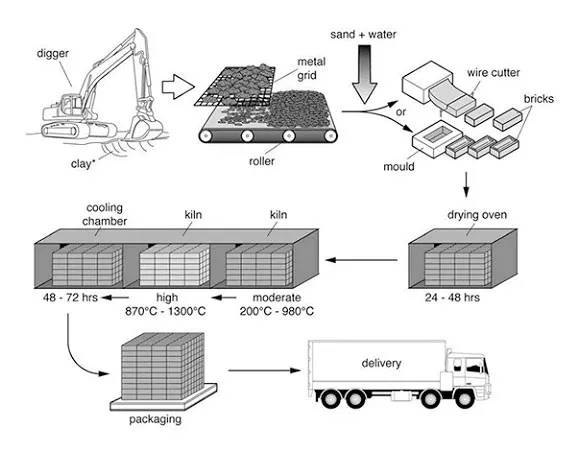
A cyclical process, on the other hand, is a process that goes back to the beginning and repeats over and over again, such as the life cycle of a frog or a butterfly.
Cyclical process
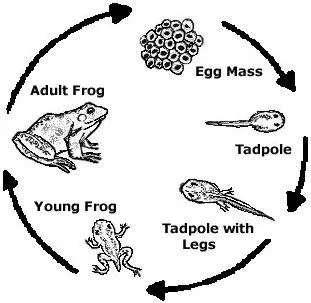
2) Where does the process start and end?
For a linear process this will usually be obvious. It may be harder to determine for a cyclical process so it’s important that you examine the graphic carefully to find out.
3) How many steps are there to the process?
If there are a lot, it can be helpful to number them from 1 to whatever number the final stage is.
4) Can the process be easily broken down into stages?
In the brick-making graphic, for example, there are three stages:
a) Creating the bricks from clay
b) Manufacturing the finished product by drying and firing
c) Packaging and delivery
In the life cycle graphic above, there are also three distinct stages as the frog passes through different stages of development – egg, juvenile, adult.
5) What are the raw materials? What is produced at the end of the process?
These questions obviously apply only to manufacturing processes.
For other types of process, it might be more appropriate to ask the following question.
6) What is the end result of the process?
This question is relevant for our practice IELTS process diagram question which shows a process that creates something using a particular structure. The end result is the production of electricity.
So, what main features stand out in our practice graphic? Here it is again.

This graphic doesn’t contain very much detail. There are only two stages to the process:
Stage 1: Electricity is generated as the wave flows into the structure (Diagram A).
Stage 2: Electricity is also created as the receding wave draws air back down the column (Diagram B).
Other diagrams are more complex and you have to go through them stage by stage to work out what’s happening and then pick out just 2 or 3 main feature to write about.
The key features you select will be the starting point for your essay. You will then go on to add more detail later. However, with just 20 minutes allowed for Task 1, and a requirement of only 150 words, you won't be able to include many details.
We’re now ready to begin writing our essay. Here’s a reminder of the 4 part structure we’re going to use.
Step 3 – Write an Introduction
In the introduction, you should simply paraphrase the question, that is, say the same thing in a different way. You can do this by using synonyms and changing the sentence structure. For example:
Introduction (Paragraph 1):
The two diagrams illustrate a method of creating electricity from the force of waves using a specifically designed man-made construction.
This is all you need to do for the introduction.
Step 4 – Write an Overview (Paragraph 2)
In the second paragraph, you should give a general description of the diagram/s or process. The detail comes later in the essay.
State the information simply using synonyms where possible. No elaborate vocabulary or grammar structures are required, just the appropriate words and correct verb tenses.
For example:
Overview (Paragraph 2):
The structure, consisting of a wave chamber and a tall column containing a turbine, is erected on a steeply sloping coastal cliff or sea wall where it is subject to the movement of the ocean waves.
Step 5 – Write the 1st Detail Paragraph
Paragraphs 3 and 4 of your IELTS process diagram essay are where you include more detailed information. In paragraph 3, you should explain the first key feature in more detail.
For this question, we will expand on the first stage of the process. Here it is again:
Stage 1: Electricity is generated as the wave flows into the structure (Diagram A).
And this is an example of what you could write:
Paragraph 3 :
The first diagram shows how the incoming wave fills a large chamber and forces the air inside this space up the column and through the turbine. The pressure of the air rotates the turbine which generates a current of electricity. The process does not end there for the structure is able to continue producing power as the sea recedes as can be seen in the second diagram.
Step 6 – Write the 2nd Detail Paragraph
For the fourth and final paragraph, you do the same thing for your remaining key features or, for this question, the second stage of the process.
Here it is again:
Stage 2: Electricity is also created as the receding wave draws air back down the column (Diagram B).
Here’s an example of what you could write:
Paragraph 4 :
As the water now flows away from the structure, it draws air back down the column and downwards through the turbine in the same direction as the previous upward flow of air. The turbine continues to turn thus generating even more electricity.
Here are the four paragraphs brought together to create our finished essay.
Finished IELTS Process Diagram Essay
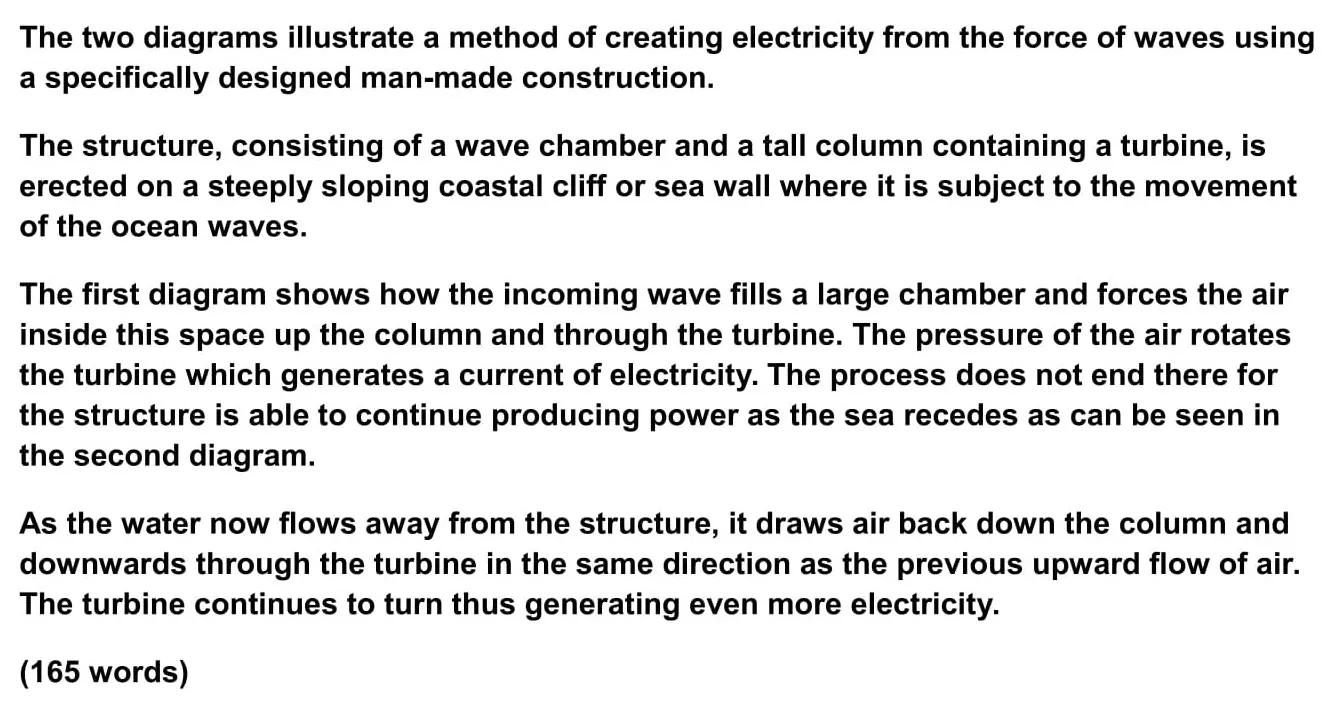
This sample IELTS process diagram essay is just over the minimum word limit so you can see that you don’t have space to include very much detail at all. That’s why it is essential to select just a couple of main features to write about.
Now use what you’ve learnt in this lesson to practice answering other IELTS process diagram questions. Start slowly at first and keep practicing until you can plan and write a complete essay in around 20 minutes.
Want to watch and listen to this lesson?
Click on this video.
Would you prefer to share this page with others by linking to it?
- Click on the HTML link code below.
- Copy and paste it, adding a note of your own, into your blog, a Web page, forums, a blog comment, your Facebook account, or anywhere that someone would find this page valuable.
Like this page?
Ielts academic writing task 1 – all lessons.
IELTS Academic Writing – A summary of the test including important facts, test format & assessment.
Academic Writing Task 1 – The format, the 7 question types & sample questions, assessment & marking criteria. All the key information you need to know.
Understanding Task 1 Questions – How to quickly and easily analyse and understand IELTS Writing Task 2 questions.
How To Plan a Task 1 Essay – Discover 3 reasons why you must plan, the 4 simple steps of essay planning and learn a simple 4 part essay structure.
Vocabulary for Task 1 Essays – Learn key vocabulary for a high-scoring essay. Word lists & a downloadable PDF.
Grammar for Task 1 Essays – Essential grammar for Task 1 Academic essays including, verb tenses, key sentence structures, articles & prepositions.
The 7 Question Types:
Click the links below for a step-by-step lesson on each type of Task 1 question.
- Table Chart
- Process Diagram
- Multiple Graphs
- IELTS Writing
- IELTS Process Diagram
- Back To Top
* New * Grammar For IELTS Ebooks

$9.99 each Full Set Just $ 23.97
Find Out More >>
IELTS Courses

Full details...

IELTS Writing Ebook

Discount Offer
$7 each Full Set Just $ 21

Find out more >>
Testimonials
“I am very excited to have found such fabulous and detailed content. I commend your good work.” Jose M.
“Thanks for the amazing videos. These are ‘to the point’, short videos, beautifully explained with practical examples." Adari J.
"Hi Jacky, I bought a listening book from you this morning. You know what? I’m 100% satisfied. It’s super helpful. If I’d had the chance to read this book 7 years ago, my job would be very different now." Loi H.
"Hi Jacky, I recently got my IELTS results and I was pleased to discover that I got an 8.5 score. I'm firmly convinced your website and your videos played a strategic role in my preparation. I was able to improve my writing skills thanks to the effective method you provide. I also only relied on your tips regarding the reading section and I was able to get a 9! Thank you very much." Giano
“After listening to your videos, I knew I had to ditch every other IELTS tutor I'd been listening to. Your explanations are clear and easy to understand. Anyways, I took the test a few weeks ago and my result came back: Speaking 7, listening 9, Reading 8.5 and Writing 7 with an average band score of 8. Thanks, IELTS Jacky." Laide Z.
Contact
About Me
Site Map
Privacy Policy
Disclaimer
IELTS changes lives.
Let's work together so it changes yours too.
Copyright © 2024 IELT Jacky
All Right Reserved
IELTS is a registered trademark of the University of Cambridge, the British Council, and IDP Education Australia. This site and its owners are not affiliated, approved or endorsed by the University of Cambridge ESOL, the British Council, and IDP Education Australia.

IELTS Writing Task 1 Process: An overview, steps and tips
This task, every now and then, presents as a hindrance for test takers owing to its tricky and complicated series of steps within a process or cycle. This article, therefore, will show you a brief introduction of IELTS Writing Task 1 Process as well as steps and tips to ace the task.
1. An overview of IELTS Writing Task 1 Process
Having no data or numbers shown, IELTS Task 1 Process is rather similar to IELTS Task 1 Map. However, instead of a map, this question type is in the form of a process with different steps or a cycle with diverse stages. There are a variety of possible types of process such as a natural process (e.g. water-made cycle), a manufacturing process, a system, etc.
If you are given a task of describing a process in your IELTS exam, it will be a series of pictures showing steps or stages of how a machine, a life-cycle of an animal or human, a phenomenon,etc. are made or how they work.
To be specific, there are normally three types of process:
- Natural process: how a creature is born or a phenomenon is made (e.g. Life cycle of a frog, Process to form rain, etc.)
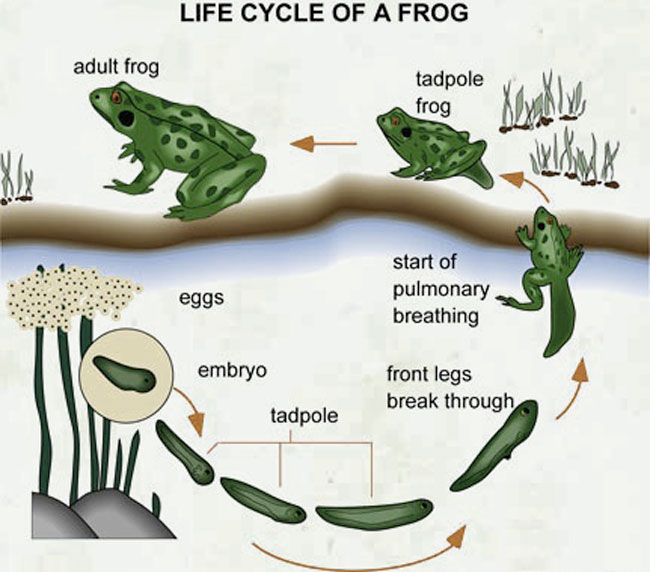
- Manufacturing process: how a man-made product is made (e.g. Produce coffee, cement, How glass containers and bottles are recycled, etc.)
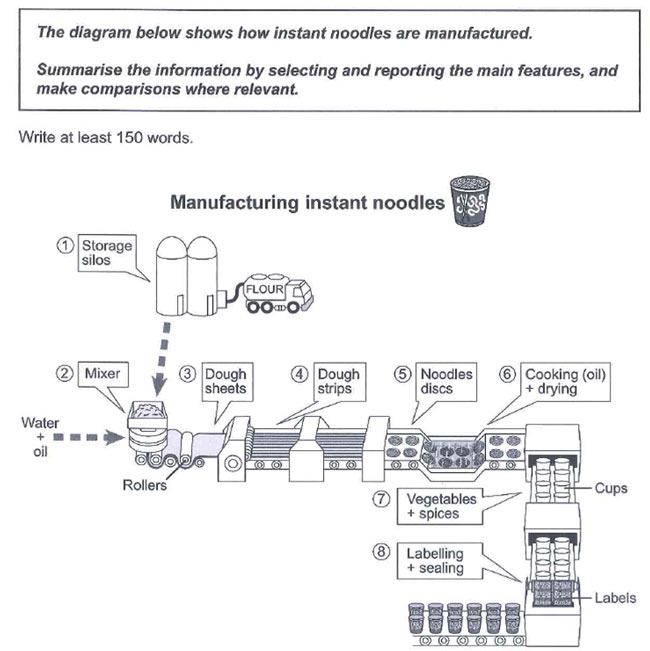
- Object: how an object changed or how it works (e.g. the development of cutting tools in the Stone Age, etc.)
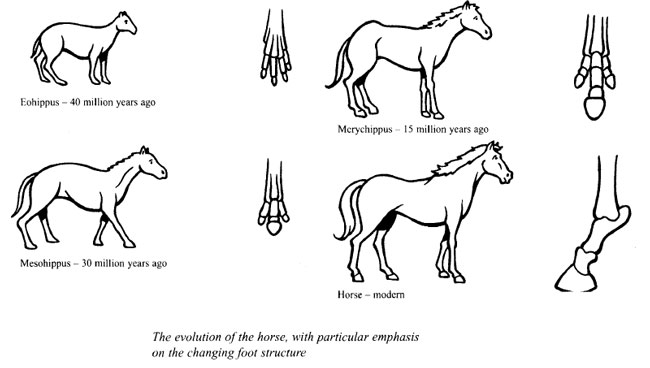
Your task, in IELTS Writing Task 1 Process is to report all key features and steps/stages in the process and cycle or to make comparisons in terms of an Object describing task. You will have around 20 minutes with at least 150 words written on this task.
Practice now: IELTS Writing Practice Test
2. Structure of IELTS Task 1 Process
It is strongly advised to still have a three-part IELTS Process report:
2.1. Introduction
In one or two sentences, you need to rewrite the process question in your own words (paraphrase) and assure these following key elements to be mentioned:
- Type of diagram (process-cycle)
- Main topic (a structure that is used to generate electricity from wave power)
- Type of process (manufacturing process)
- Time period (no time period)
e.g. The two diagrams show how electricity can be generated from the rise and fall of water caused by sea waves.
2.2. Overview
In this part, there are no detailed or elaborate descriptions or vocabulary required. In about 1-3 sentences, just give a general description of the process or cycle. You can base on these questions below to have an effective overview:
- How many stages are there in the process?
- What is the beginning and the end of the process?
- What is the raw material? What is the final result produced?
- Are there many changes? What is the most striking change? (for Object)
e.g. The process involves a structure which is mounted on the side of a cliff or sea wall. This structure consists of a large chamber. One end is open to the sea, and the other leads into a vertical column, which is open to the atmosphere. A turbine is installed inside this column and this is used to generate the electricity in two phases.
The body part, as usual, should be divided into two different paragraphs. You can separate the process by describing the first half in the first paragraph and the rest in the second paragraph.
With regards to describing an Object and how it changed, it is advisable to split the body part depending on periods of time given.
e.g. Paragraph 1: Tool A – 1.4 million years ago
Paragraph 2: Tool B – 0.8 million years ago
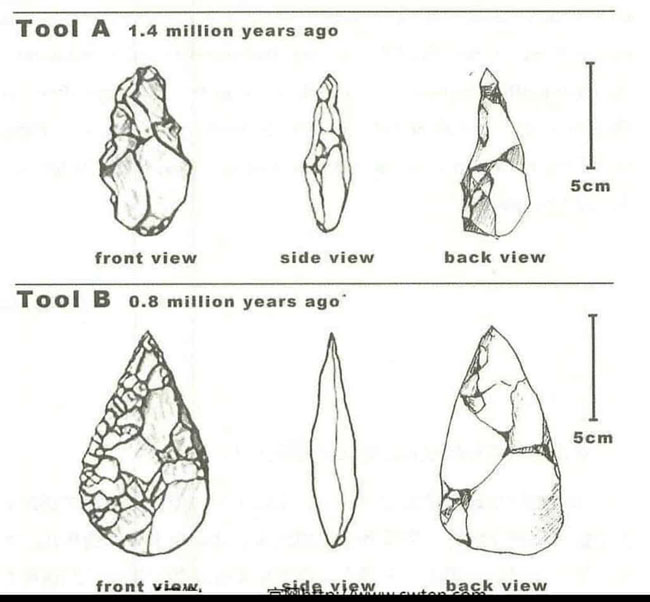
Remember to describe all the features in detail but each paragraph should be only in three or four sentences in order not to go beyond the word and time limit.
Let’s get started with our free IELTS online test to pass the exam with your highest score.
3. Steps to write a high-scoring IELTS Writing Task 1 Process essay
3.1. step 1: analyse the process question given.
With the same format with all other types of IELTS Academic Writing Task 1 , IELTS Process question also provides candidates with following information:
- Description of the process
(e.g. The diagrams show a structure that is used to generate electricity from wave power.)
- Requirements
You should spend about 20 minutes on this task.
Summarise the information by selecting and reporting the main features, and make comparisons where relevant.
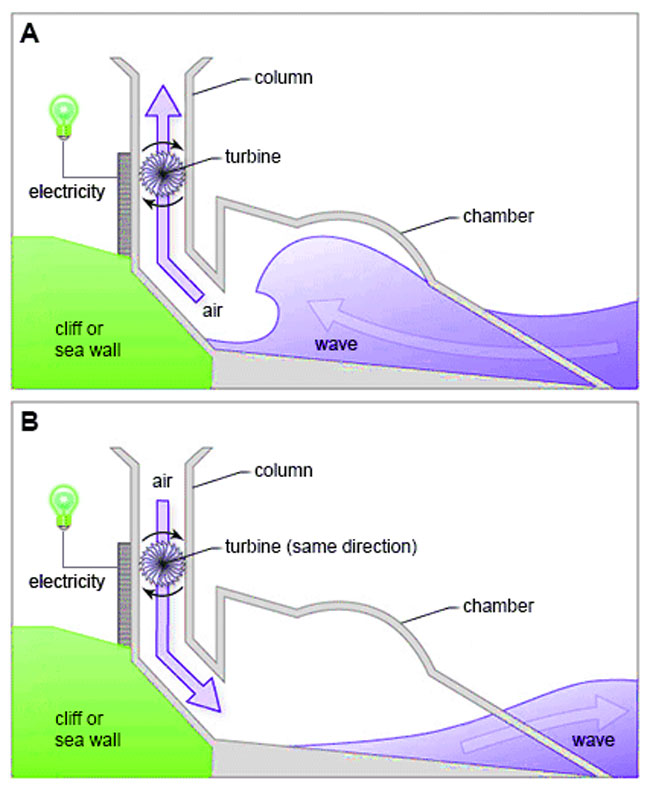
3.2. Step 2: Find out main features in the process
Based on details of the process such as titles, labels or captions for each picture, you can identify the key characteristics of the process.
In addition, you can refer to these elements to identify the key features in the process:
- Linear or Cyclical Process
– Linear Process: the process happens as a flow with two different starting and ending places
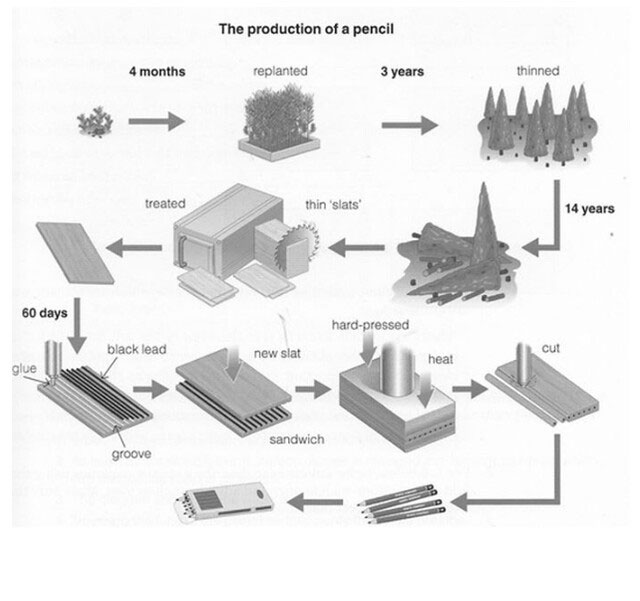
– Cyclical Process: the process happens as a circle going back to the starting place and the cycle repeats over and over again
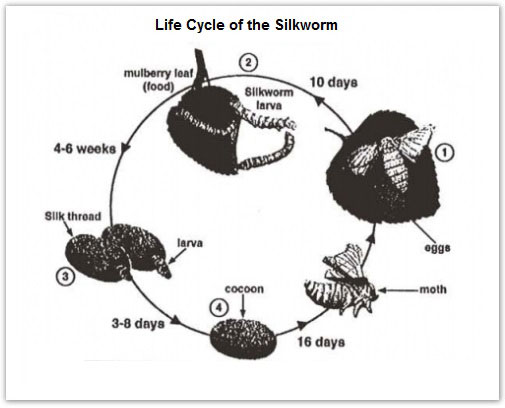
- The starting and ending places
- Steps/Stages in the process
- Raw materials and final products
3.3. Step 3: Write your IELTS Writing Task 1 essay
Make sure you know well the structure of an IELTS Writing Task 1 report before starting to write:
- Paragraph 1: Introduction
- Paragraph 2: Overview
- Paragraph 3: 1st main features/steps
- Paragraph 4: 2nd main features/steps
4. Tips for IELTS Writing Task 1 Process
- Both active and passive forms should be used flexibly when reporting a process or cycle
- In terms of describing an object, comparisons to show the chances and differences overtime should be utilised.
- Don’t go beyond the word limit (at least 150 words) and time limit (about 20 minutes)
- Don’t give personal opinions while reporting the process
- Use present simple tense if there is no time period mentioned
- Try to use suitable words and phrases for IELTS Writing Task 1 Process to structure and link the process coherently.
5. Vocabulary for IELTS Writing Task 1 Process
Also, if you want to consult the sample template for IELTS Process, visit this: Sample Template For Cycle – Process IELTS Academic Writing Task 1
After this article, hope you can dominate IELTS Writing Task 1 with confidence. If you want to learn more about other aspects of the IELTS exam, please join us on our app and website IELTS TEST PRO!
- Skip to primary navigation
- Skip to main content
- Skip to primary sidebar
- Skip to footer

IELTS Advantage
IELTS Preparation Courses
IELTS Writing Task 1: Process Questions
Introduction.
In Part 1 of the IELTS Writing test, you might be asked to describe a process. IELTS Task 1 process questions are not as common as charts or graphs , but they do come up occasionally. They are much easier to answer than the other Task 1 questions, but many people do not prepare for them at all. This is a big risk to take because it does not take long to familiarise yourself with these questions and learn how to answer them properly.
This post will show you:
- the different types of process question
- a 5 step plan for answering any process question
- how to write an introduction
- how to pick out the main features and write an overview
- how to write about each stage in detail
- how to sequence your language
Different Types of Process Question
There are generally two different types of process question: natural and man-made.
Natural processes include things like the life cycle of a butterfly or frog, pregnancy, the water cycle or how cows produce milk.
You might also be asked to describe a man-made process like how coffee, tea, beer or wine are made, how cement or bricks are produced or how an ATM or the internet works.
It does not matter if it is man-made or a natural process. The same skills and system we use to answer process questions are the same for both.
Writing Task 1 Process Questions: 5 Step Plan
To understand the task and quickly make a plan to answer process questions you should follow the 7 steps below:
- Understand the process. Find the start and the end of the process. Count how many stages there are and understand what each stage does and the relationship it has with the stage before and after it.
- Paraphrase the question.
- Describe what is happening generally in 2 sentences. This is your overview paragraph and I will show you how to write this in more detail below.
- Divide the process in two and write two separate paragraphs detailing each stage of the process.
- Check your work.
Understand the Process
One of the most challenging things about these questions is having to write about something you have never seen or heard of before.
Don’t worry, try to remember two things.
First, the examiner knows that you have probably never seen this process before and you have only 20 minutes to write about it. They do not expect a perfect answer. Just pick out the main features and report them accurately.
Second, you can quickly understand any process by asking yourself these questions:
- Where does the process start and where does it end?
- How many stages are there?
- Is it a man-made process or natural process?
- Is it a cyclical (in a circle) or linear (one start point and one end point) process?
- Are there any materials that need to be added to the process?
- What is produced?
- What does each stage of the process do?
- What are the relationships between each stage?
The processes you will be asked to write about in the IELTS test will not be very complicated and you should be able to easily answer all of the questions above. When you do this you will completely understand what is happening and you will be able to start writing your answer.
Paraphrase the Question
Every process question follows the same format. First, it tells you some general information about the process and then it instructs you to ‘Summarise the information by selecting and reporting the main features.’
For example, the question above states:
The diagram below shows the process of photosynthesis. (General information) Summarise the information by selecting and reporting the main features. (Instructions)
The first thing we need to do in every question is to paraphrase the general information. Paraphrasing is one of the most important IELTS skills to master. We paraphrase a sentence by rewriting it so that the words are different but the meaning stays the same. There are a few different ways we can do this but the easiest way is to use synonyms and change the word order of the sentence. Synonyms are different words that have the same meaning, for example, woman and female.
Let’s look at the questions above and paraphrase them.
Question 1 : The diagram below shows the process of photosynthesis.
Paraphrased : The illustration demonstrates how plants produce energy from sunlight.
Question 2 : The diagram below shows how electricity is produced in a nuclear power station.
Paraphrased : The illustration below shows the process of how nuclear power plants make electricity.
Every time you see an Academic Task 1 question rewrite the question and this should be your first paragraph. We can now move on and write our next paragraph; the overview.
Overview of Process
The overview is probably the most important paragraph in the whole essay. If you do not write an overview it is extremely difficult to get a high mark in IELTS Task 1, however, if you learn how to write a good one, you are far more likely to get the score you deserve.
Overviews for process questions can be done quite easily by asking yourself a few questions. The answers to these questions will allow you to form 2 overview sentences.
- Is it a man-made or natural process?
- Where does it start and where does it end?
- Is it cyclical or linear?
- Are any materials added?
You might not be able to answer all of these for each process question, but you will always be able to answer enough of them to be able to write a good overview.
Detail Each Stage of the Process
Now that we have paraphrased the question and provided an overview we need to tell the examiner about each stage in more detail.
- say what each stage does
- what it produces
- if any materials are added
- and/or discuss the relationship with the previous or subsequent stages.
Sequencing the Process
Try to sequence your language and make your details easier to read by using language like:
- First of all
- Following that
- Subsequently
- Before that
Make sure you know the meaning and grammar of the words and phrases above before you use them. Do not use them if you are not 100% sure about how they should be used in a sentence.
Check Your Essay
You should try to leave 3-4 minutes at the end to check and improve your work. Many students do not do this because they feel they do not have enough time, however, it is better to try and get everything done in 15 minutes and then check and refine your work, than do everything in 20 minutes.
Things that you should check are:
- Are there any spelling or punctuation mistakes?
- Are the verbs the correct tense?
- Does the process I describe make sense? Does it match the diagram?
- Is there any vocabulary repetition we could remove with synonyms?
- Do I have 4 clear paragraphs?
- Did I write over 150 words?
- Have I included things only obvious from the diagram?
- Have I included the main features in the overview?
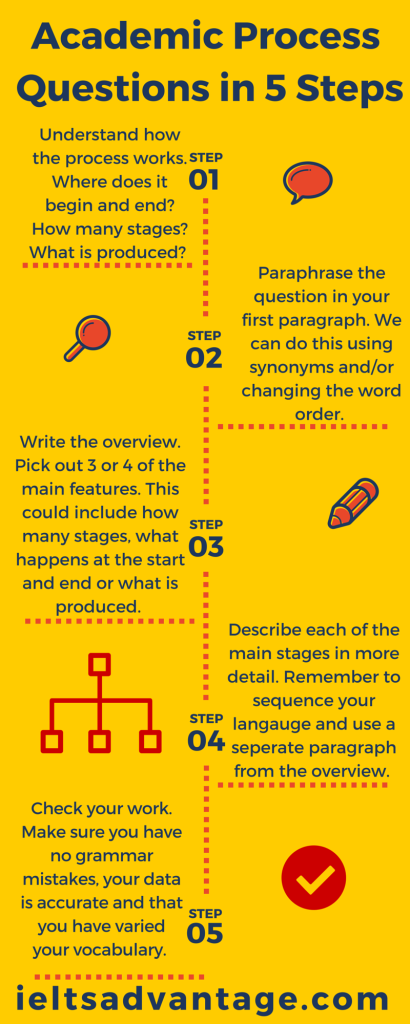
About Christopher Pell
My name is Christopher Pell and I'm the Managing Director of IELTS Advantage.
I started IELTS Advantage as a simple blog to help 16 students in my class. Several years later, I am very humbled that my VIP Course has been able to help thousands of people around the world to score a Band 7+ in their IELTS tests.
If you need my help with your IELTS preparation, you can send me an email using the contact us page.

IELTS with Mark Teacher
How to write ielts task 1 academic ‘process diagrams’.
There are 3 main types of diagrams in Writing Task 1 Academic: a.) Dynamic graphs b.) Static graphs c.) Diagrams ( Maps , Processes) <– we’re talking about processes
In this post I will show you how to write about Process Diagrams.
Already know how to write IELTS Task 1 Processes? Send me your practice essays for expert feedback:

Fortunately, the essay structure for every type of Task 1 is basically the same.
Structure: Task 1 – Academic 4 paragraphs 1.) Summary / Introduction 2.) Overview 3.) Body 1 4.) Body 2
What are Process Diagrams?
Process diagrams describe the sequence of steps either to show how something is made or how something works. The steps of each process are numbered or labelled to help you understand it
For example, this process diagram shows how glass containers are made . The steps of the process are numbered 1 to 9.

Sometimes you might see a natural process . For example, this process diagram shows the life cycle of a fish.

But in most cases, an IELTS Writing Task 1 process diagrams depict a manmade structure :

You might also get a diagram with 2 separate processes. For example, this process diagram shows how a hot air balloon ascends (goes up) and descends (goes down) . The steps for each process are labelled.

In this blog post we will look at how to approach all kinds of IELTS Writing Task 1 process diagrams, paragraph-by-paragraph.
1.) Process Diagram Introduction / Summary
The introduction paragraph in Task 1 only needs to be 1 or 2 sentences. Like all IELTS Writing Task 1 essays, your introduction should present the main purpose of the graph to the reader in your own words. This means paraphrasing the official IELTS diagram description if you can.
In most cases, you can use one of the following phrases to start your introduction:
- The diagram shows … the glass+gerund process / cycle
- The diagram depicts … the process of + Gerund
- The diagram explains … how [noun] is made / is done / is created
We use the Present Simple because the process is always the same.
Here is a language table which you can use to help you create Process Diagram introductions:
Here are some examples of introduction/summary paragraphs using the language table above.

- The pictures show … how plastic bottles are recycled
- The diagram shows … the process of recycling plastic bottles.
- The diagram shows … the plastic bottle recycling process.
Another example:

- The images illustrate … the process of flying a hot air balloon.
- The diagram depicts … how a hot air balloon is flown and operated.
You try! – Write an introduction sentence for this process diagram task. Use the table above to help you.

- The diagram explains … the process of shaping glass containers.
- The pictures depict … how glass containers are created and shaped.
2.) Map Diagram Overview
The purpose of the overview paragraph is to give a short summary of the main features.
In process diagrams, the main features can include:
- The starting actions of the process and the final outcome .
- The machines that have the most significant effect or have similar functions. e.g. ovens/kilns for heating – crushers/mixers for breaking down the material, generators/turbines for creating electricity or energy)
- The changes in the state of the materials (liquid > metal / cold > hot / shaped > destroyed)
Here is a language table you can use to help you create your own process diagram overviews:
In some cases, to make a longer overview it is also possible to [combine] some of the features above. I do this in my examples below:

- Overall, we can see that the plastic bottles go from being collected to re-made as consumer items , [during which time] they are taken from empty used bottles and are reduced to a raw material through a series of compressing machines and crushers .

In process diagrams about how machines work, the most common main feature is to highlight the main machinery or mechanisms in the diagram and describe what their function is. For example:
- Overall, we can see that … the operator of the hot air balloon primarily uses a system of cords, valves and burners to control the height of the balloon.
- Overall, we can see that … controlling the height of the hot air balloon involves a system of cords, valves and burners , which allow the operator to lift and lower the balloon.
You try! – Write an overview paragraph for this process diagram task. Use the table above to help you.

- Overall, we can see that … glass is put through a series of furnaces , kilns and moulds to eventually be shaped into a finished product.
- Overall, we can see that … glass pieces are melted down before being pressed and moulded into a container-like shape and eventually checked for quality .
3.) Body Paragraphs
Next are the Body paragraphs of your Task 1 report. You can write 2 or 3 Body paragraphs.
Body paragraphs describe the main features of the process in detail, including the specific actions or machines used in every step.
It is absolutely best to go through the process chronologically (from start to finish).
To help the reader follow the process, you should also use signposts to tell the reader when you are describing the next step.
You can use basic signposts or advanced signposts.
Use the labels on the diagram to help you write. Often these labels have a verb or adjective form. You can also use the active voice or passive voice of the verb to avoid repetition and show your vocabulary/grammar ability.
For example:

Sorting : to sort Passive Voice: is / are sorted – “The bottles are sorted into 2 groups…” Adjective: sorted – “The sorted bottles are sent to … [Step 4]” .
In most cases, the Passive Voice is the most common voice to use in IELTS Task 1 process diagrams, that’s for two reasons:
- The process is the same every time (it doesn’t matter who does it)
- We don’t always know who operates the machines (it’s not an important feature)
Here are some examples of full essays that use the same tips as above. The [signposts] and [the passive voice] have been highlighted.

Introduction: The diagram shows the process of recycling plastic bottles.
Overview: Overall, we can see that the plastic bottles go from being collected to re-made as consumer items, during which time they are taken from empty used bottles and are reduced to a raw material through a series of compressing machines and crushers.
Body 1 : [First of all], disposed of plastic bottles are collected from recycling bins. [ Before], a garbage truck transports the bottles to a recycling centre . [ After they have arrived,] the bottles are sorted into two categories based on their viability, and the usable bottles are compressed into large blocks.
Body 2 : [After that] , these blocks are crushed into small pieces of plastic, where they are then washe d . The small plastic pellets that are produced and then are put into another machine which creates heated pellets that form raw material . [Finally] , this raw material is used to produce brand new products such as bottles, clothes, recycled bags and even pencils. (162 words)

Introduction : The diagram depicts how a hot air balloon is flown and operated.
Overview : Overall, we can see that controlling the height of the hot air balloon involves a system of cords, valves and burners, which allow the operator to lift and lower the balloon.
Body 1 : (focus on ascending) In order to ascend, the pilot must [first] open the gas tanks located inside the passenger basket and ignite the burners. With the valve at the top of the hot air balloon closed, this allows more hot air to fill the balloon envelope, which causes the balloon to rise.
Body 2 : (focus on descending) In contrast, to descend the balloon, the gas tanks and burners must be closed and turned off . [Then, once the valve cord is pulled by the operator] , the valve at the top of the balloon opens and allows the hot air to be released . [As the hot air leaves the balloon] , the entire craft begins to return to the ground. (164 words)
You try! – Write the body paragraphs for this process diagram task. Use the examples above to help you.

Overview: Overall, we can see that glass is put through a series of furnaces, kilns and moulds to eventually be shaped into a finished product.
Body 1: [First] small glass pieces are put into a furnace and are heated at 105 degrees Celsius to create hot glass. [When the glass has melted] it is then placed inside the first mould of the process and pressed , shaping the glass into a cup or container. [Afterwards] the glass is moved to a second mould where air is allowed inside. This makes the glass wider and taller in shape.
Body 2: [Then] the newly moulded cup is heated again in a kiln, this time at a lower temperature of 482 degrees. [After that] the cup is allowed to cool for 60 minutes at just 25 degrees, during which time the heat is also released . [Finally] the cooled glass is checked and sorted into two categories, one to be packaged and sold , the other to be discarded as waste.
There you go! A high-band approach, several examples and a reliable framework for you to use in your own IELTS Writing test.
Questions? Write them in the comments below.
Send me your IELTS Writing Task 1 practice essays and get expert feedback in 72 hours!

<– Back to Task 1 Academic example essays and lessons.
Share this:
- Click to share on Twitter (Opens in new window)
- Click to share on Facebook (Opens in new window)
Related Posts

IELTS Writing Task 1 Essay Sample – Static – News Sources
Learn how to write high-band IELTS Task 1 essays like this with my IELTS Task 1 – Static Graph eBook: Click here or the picture below! Want me…

IELTS Writing Task 1 Essay Sample – Static – Tea & Coffee Habits

IELTS Writing Task 1 Essay Sample – Static – Library Use

IELTS Writing Task 1 Essay Sample – Process – Geothermal Electricity
The diagram below shows how geothermal energy is used to produce electricity. Want me to check your IELTS Task 1 essays? You can send me your own IELTS…

IELTS Writing Task 1 Essay Sample – Map – Norbiton Industrial Area
If you want to learn how to write IELTS Task 1 essays like this one, you can get Advanced eBook here: Or …. you can send me your…

IELTS Writing Task 1 – Maps e-Book – Out now!
I’m excited to announce another addition to my growing IELTS Writing Task 1 eBook series! The latest downloadable PDF is all about Maps! 19 pages of grammar and…
- A Beginner’s Guide to IELTS
- Common Grammar Mistakes [for IELTS Writing Candidates]
Writing Correction Service
- Free IELTS Resources
- Practice Speaking Test
Select Page
How to Describe a Process Diagram [IELTS Writing Task 1]
Posted by David S. Wills | Jul 9, 2019 | IELTS Tips , Writing | 0
In the IELTS writing exam, you may be required to describe a process diagram. This will be part of writing task 1, a section in which you might normally expect to encounter a line graph, bar chart, or table.
Describing a process diagram might fill you with fear, but you shouldn’t worry too much. They always look much more difficult than they really are. While process diagrams may seem much harder than line graphs or bar charts, they are usually quite simple, and if you can avoid panicking, you should be able to write a strong essay.
In today’s lesson, I’m going to show you a step-by-step guide to describing process diagrams for IELTS.
Analyse the Question
First of all, as with any IELTS writing question, you must take a few minutes to analyse the question before you begin writing. Let’s look at an example question:
The diagram below shows how electricity is generated in a hydroelectric power station. Summarise the information by selecting and reporting the main features and making comparisons where relevant.
Here is the diagram:
And here is how it will look on the exam paper:
So what do you need to do? The question tells us in pretty simple terms what the diagram is about, so we should read that first. In this case, it is all about generating (making) electricity. We can see from the picture that this is done using water (hydroelectric power).
Identify the Stages
When you are analysing the diagram, it is important to break it into different stages and put them in the correct order. Sometimes this is very easy… but sometimes it can be a little difficult. Looking at our example diagram from above, we can identify the following stages:
- Water flows from river into reservoir
- Water flows through intake to power station
- Turbines turn to generate electricity
- Electricity sent to national grid via power lines
- Water flows into lower level reservoir
- Water returns back to upper level at night
You might want to label the diagram this way:
Note that the order of events is not always 100% clear, and sometimes two or more things may happen at the same time. In the above example, I have listed #4 and #5 separately, even though they basically happen together. I did this because in my description I would like to link the electricity generator to the power lines because I feel that this is a logical connection. The excess water is more incidental, and would then be mentioned after.
Finding the Right Vocabulary
Many students panic when they see a process diagram because they think that there will be some complicated vocabulary that is needed. For example, there are sometimes diagrams about complex industrial or ecological processes… Can you imagine how difficult those would be to describe?!?!
Well, actually they are not that difficult. In fact, process diagrams usually contain most of the vocabulary that you need to describe them within the diagram. You just need to make some small alterations to the grammar.
Check out this video about how to describe a process diagram using the vocabulary included on the diagram:
Going back to our example from above, we can see that there is already a lot of information in the diagram, and we can use this to describe the process without having to rely on our own knowledge. (Let’s face it, most people don’t know the precise language required to talk about hydroelectric dams.)
We can see that the words “generate” and “generator” are already included on the diagram, and these are key to understanding what is happening. Another word, “flow” is written on the diagram, and this refers to the movement of water.
In order to avoid repetition, you might want to think of synonyms of these words:
It is worth noting that “pump” is not exactly a synonym of “flow,” but it can contextually have a similar meaning when considering this diagram. You can also think of antonyms (words with the opposite meaning). An antonym of “flow” is “hold back.” You can see how I have used these words in my sample answer below.
Grammar for IELTS Writing Task 1
Your grammar must be very precise in IELTS writing task 1. When it comes to process diagrams and maps , you should be especially careful about article use. Remember that the reader should be able to visualise the image from your description, so you need to imagine that they cannot see it.
Considering that, you must use “a” when you first introduce something and then later use “the” to refer back to it. That’s because it is an unknown thing first but later it is known. This is explained in depth in this video lesson:
Passive Voice
While the passive voice is not very common in English, it is extremely common when people describe process diagrams for IELTS. This is because the passive voice is used when we don’t know who or what is doing an action, or don’t need to say. It is also useful when we put emphasis on the object of an action. For all those reasons, we really need it for this sort of task.
For example, rather than saying “______ generates electricity,” we can instead say, “Electricity is generated.” This is useful because we don’t know who is operating the power station, and we are not allowed to guess at this sort of thing in IELTS. If we wanted to include the fact that the process results in the generation of electricity, we could say it in one of two ways:
- The flow of water through a dam generates electricity.
- Electricity is generated by the flow of water through a dam.
The second one is passive voice, and it puts emphasis on the result, which can be more useful, especially if we are focusing on this in the introduction to our essay.
Here is another example:
- A dam holds water back from its natural course.
- The water is held back from its natural course by a dam.
Again, the second example is passive and puts emphasis on the water, which may be more important in that context. It also adds a degree of formality, as passive structures are a feature of formal writing.
Sometimes we can mix active and passive voice to give some diversity to our language:
- The water flows into a lower reservoir, but at night it is pumped back up through the system to the upper reservoir.
The first example is active and the second is passive. In the first example, the water is more important than the reservoir, and having an active structure shows the relationship more clearly. Water —-> reservoir. In the second, we don’t need to say what is pumping the water, and we want the water to be more important, so we use passive voice.
Here is a video about using the passive voice in IELTS writing task 1:
Sample Answer
Here is my sample answer to the question and diagram above:
The diagram depicts a hydroelectric power station, and shows how electricity is generated by the flow of water through a dam and other component parts. Ultimately, water flows from one reservoir to another, producing electricity that is sent to the national grid. Firstly, water enters a reservoir from a river. The water is held back from its natural course by a dam, underneath which there is an intake pipe that is open during the day and closed at night. During the daytime, water flows down, via gravity, to the power station, which is housed below the dam. In the power station, the flowing water spins a generator, which produces an electrical current that is then distributed via power lines to the national grid. Once the water has generated this electricity, it flows into a lower reservoir, but at night it is pumped back up through the system to the upper reservoir, ready to begin the process again the following day.
About The Author
David S. Wills
David S. Wills is the author of Scientologist! William S. Burroughs and the 'Weird Cult' and the founder/editor of Beatdom literary journal. He lives and works in rural Cambodia and loves to travel. He has worked as an IELTS tutor since 2010, has completed both TEFL and CELTA courses, and has a certificate from Cambridge for Teaching Writing. David has worked in many different countries, and for several years designed a writing course for the University of Worcester. In 2018, he wrote the popular IELTS handbook, Grammar for IELTS Writing and he has since written two other books about IELTS. His other IELTS website is called IELTS Teaching.
Related Posts
Hesitation in the IELTS Speaking Exam
August 22, 2017
How to Write a Letter of Complaint [IELTS General Writing]
June 29, 2020
Synonyms for People
October 14, 2022
What to do when you don’t understand a question
November 8, 2018
Leave a reply Cancel reply
Your email address will not be published. Required fields are marked *
This site uses Akismet to reduce spam. Learn how your comment data is processed .
Download my IELTS Books
Recent Posts
- Past Simple vs Past Perfect
- Complex Sentences
- How to Score Band 9 [Video Lesson]
- Taxing Fast Food: Model IELTS Essay
- Airport Vocabulary
Recent Comments
- Daisey Lachut on IELTS Discussion Essays [Discuss Both Views/Sides]
- David S. Wills on Describe a Historical Period
- Siavash on Describe a Historical Period
- fabliha on IELTS Speaking Partners
- tufail khan on IELTS Discussion Essays [Discuss Both Views/Sides]
- Lesson Plans
- Model Essays
- TED Video Lessons
- Weekly Roundup

How to Write A Task 1 Process Diagram Band 9 Report

Process diagrams are common questions in IELTS Writing Task 1. They show a picture or drawing of how a final product is made or a machine works. Many students find this question intimidating, not because it's difficult, but because they're not sure how to approach it. But don't worry, we'll show you how to answer this question with confidence, step by step.
Instead of discussing the whole picture, focus on the big picture and identify the major stages. This will help you to avoid confusion and stay on track.
On this page, we'll guide you through the 7 major steps for answering the IELTS Task 1 Process Diagram question:
Analyse the question
Identify the major features
Remember the 4-paragraph structure
Paraphrase the question sentence
Write an Overview paragraph
Write Body paragraph 1
Write Body paragraph 2
For all questions in the IELTS Academic Writing Task 1, using the 7-step strategy can give you an advantage in writing.
However, if you want to ensure you get the band score you need, consider using our Writing Feedback Service . A former IELTS examiner will provide you with detailed feedback and step-by-step guidance towards achieving your target band score.
In addition, we offer high-band guaranteed eBooks filled with top-quality content written by a team of former IELTS examiners. These eBooks provide powerful tips and strategies to help you achieve a high band score by revealing band 9 secrets. Our team of examiners has conducted extensive research to provide in-depth discussions in the eBooks covering all aspects of every possible IELTS essay type.

Source: Cambridge English IELTS Past Papers
1. How to Analyse A Process Diagram Question
We need to find three major areas in the question sentence:
Topic Words / Keywords (General area of the question topic)
Micro Keywords (It helps us prepare a specific answer, rather than being general)
Action Words ( The words that tell you what you need to do )
Topic Words: u niversity enrolment procedure
Micro Keywords: high school graduates
Action Words: Write a report to a lecturer describing the information
After completing the question analysis part, we need to find the major features in the diagrams.

2. How to Identify the Key Features in A Task 1 Process Diagram
Finding the major features in an IELTS task 1 process diagram question is crucial to understanding the overall process and writing an effective response. Here are some steps to guide you:
Start Broad: Initially, take a step back and observe the diagram as a whole to get a clear idea of the process. Identify what it's about, the beginning and end points, and the overall purpose or output.
Identify the Main Stages: Next, look for the main stages of the process. These are significant points that divide the process into key sections or phases. You can often identify these stages by changes in the process direction, the involvement of different elements, or the initiation of new actions.
Spot Significant Steps: Within these main stages, note the individual steps that are essential for moving from one stage to the next. Key actions, transformations, or interactions between elements usually mark these steps.
Look for Sequences or Patterns: If there are repeating steps or patterns in the process, make a note of these, as they're important features. They can also help simplify the process when you describe it in your report.
Spot the Actors: Identify the main 'actors' or elements involved in the process. These might be people, machines, natural elements, or even intangible factors like time or temperature.
Consider Quantities and Proportions: If the diagram provides data in terms of quantities, percentages, or proportions, these figures can represent major features and should be included in your report.
Remember, the goal is not to describe every minor detail but to provide a clear, concise, and coherent description of the process. Being able to find and focus on the major features in the diagram is a crucial skill for achieving a high band score on your IELTS writing task 1.
Let's apply this above mentioned techniques to find the key features in our sample question:
Three major possibilities:
Provisional Acceptance (additional documents required)
If rejected:
Either cancel the application or continue it for an alternative course.

3. Task-1 Process Diagram Report Writing Structure
We can complete the essay using only 10 sentences! Yes, it is that much simple! Take a look how we place the 10 sentences in our 4 paragraph essay structure. The eBook gives you an in-depth discussion on how to write each paragraph perfectly.
1. Paraphrasing the Question Sentence
Paraphrase the question statement using just one or two sentences.
2. Overview Paragraph
Sentence 1: summary statement 1(preview of the essay without presenting data)
Sentence 2: summary statement 2 (more preview without presenting data)
3. Body Paragraph 1
Sentence 1: first major point
Sentence 2: second major point
Sentence 3: extension sentence 1 (compare/combine the major points stated above)
Sentence 4: extension sentence 2 (extension of the previous sentence, or adding an exceptional feature).
4. Body Paragraph 2
Sentence 1: exceptional feature
Sentence 2: extension of the exceptional feature
Sentence 3: final sentence (wrapping-up the whole essay, completely based on the discussion above, nothing new)
Let's develop the answer step by step applying the above-stated 4 paragraph essay structure.
Before we delve into writing the process diagram report, let's introduce you to an effective tool.
You know achieving success in IELTS Writing requires more than just answering the question. You need a strong grasp of structure, vocabulary, organization, and grammar to effectively convey your ideas. That's where our IELTS Essay Correction Service comes in - an incredible platform for students seeking to improve their IELTS writing skills and achieve a high score on the exam.
With expert feedback from a former IELTS examiner and 24/7 support, our tailored approach will prepare you to confidently achieve a band score of 7 or higher on the IELTS exam. Therefore, without further delay, check the IELTS Essay Correction Service and take the guaranteed leap towards success.
4. Paraphrasing the Question Sentence
The first paragraph of our IELTS Task 1 essay is focused on paraphrasing the question statement. This means you'll restate the question sentence in your own words without changing its meaning. To write this paragraph effectively, you'll need to have a good grasp of paraphrasing techniques.
The purpose of this paragraph is to demonstrate to the examiner how well you've understood the question. It's important to nail this paragraph to make a good first impression. You can check the eBook where former IELTS examiners have shared powerful tips and strategies how to paraphrase most effectively.
Let's look at the actual question statement that we are using on this page:
"The diagram shows the procedure for university entry for high school graduates.
Write a report for a university or college lecturer describing the information."
We can paraphrase the statement above as:
"The diagram depicts a sequential process outlining the various steps a high school graduate can take to enrol in a university."
Congratulations, you have completed the first paragraph with just 20 words out of the allotted 150. Now, let's proceed to the next section of the essay, which is the Overview Paragraph.
5. Task-1 Process Diagram Overview Paragraph
The second paragraph of our IELTS Writing Task 1 essay is called the Overview, and it's the most important paragraph of the essay. Without an Overview, you can't score higher than band 5 in the IELTS Writing section. Therefore, it's essential to pay special attention to this paragraph. Considering the significance of this paragraph, the eBook has dedicated an entire chapter providing effective tips and strategies how to write a perfect overview paragraph.
Remember, the overview is a brief summary of the primary features that you'll discuss in the body paragraphs, so don't include any data in this paragraph, just state the apparent features that you see in the diagrams. The p urpose of this paragraph is to provide the readers with a general idea about your essay.
Overview Paragraph Struc tur e
Remember our Overview paragraph structure:
Sentence 1: summary statement 1(pre v iew of the es say without presenting data)
Let's form the paragraph:
Sentence 1(Summary Statement 1)
"Overall, any high school graduate can apply for university admission, but the administration will determine whether to accept the applicant outright, accept provisionally, or reject the application."
Sentence 2(Summary Statement 2)
"However, if the application is rejected or provisionally accepted, applicants have options to continue the enrolment process."
Complete Overview Paragraph
"Overall, any high school graduate can apply for university admission, but the administration will determine whether to accept the applicant outright, accept provisionally, or reject the application. However, if the application is rejected or provisionally accepted, applicants have options to continue the enrolment process."
Easily done! In the first paragraph, we used 20 words to paraphrase the question sentence. In the second paragraph, we added 44 more words to write the Overview. With this, we've completed two out of the four paragraphs that we recommend for writing the IELTS Task 1 essay. That means we're halfway there! It's time to move on to Body Paragraphs 1 and 2.
6. Body Paragraph 1
In the overview paragraph, we have given just a general statement of significant features, we haven't discussed any detail. Now it's time to explain them in the two body paragraphs.
Body Paragraph 1 Structure
Remember our Body Paragraph 1 structure:
Sentence 3: extension sentence 1 (compa re/combine the major points stated above)
Let's form the paragraph following the above-stated structure:
Sentence 1(First Major Point)
"The possession of a high school diploma is a prerequisite for applying for admission to a university, yet it may not be enough."
Sentence 2(Second Major Point)
"Additional documentation may be necessary for final enrolment."
Sentence 3(Extension Sentence 1)
"Successful applicants may be able to enrol directly if they meet the admission requirements."
Sentence 4(Extension Sentence 2)
"However, further documentation may be required for enrolment if additional requirements are not met."
Complete Body Paragraph 1
"The possession of a high school diploma is a prerequisite for applying for admission to a university, yet it may not be enough. Additional documentation may be necessary for final enrolment. Successful applicants may be able to enrol directly if they meet the admission requirements. However, further documentation may be required for enrolment if additional requirements are not met."
The first body paragraph of our IELTS Task 1 essay is now complete, with an additional 64 words added. We have made significant progress with our essay as we have already covered 75% of the total required words. Our approach is simple, describing the most prominent features depicted in the given images.
The first paragraph contained 20 words, the second contained 44, and the third contained 64, bringing our total to 128 words used out of the required 150. With just one more paragraph remaining, we need to write a minimum of 22 more words to complete the essay. We are making great progress, and it's time to proceed to the final paragraph, the Body Paragraph 2.
7. Body Paragraph 2
The last paragraph of our IELTS Task 1 essay is called Body Paragraph 2. It's the simplest one, as we just need to mention some additional features in the first sentence, make a comparison statement in the second sentence, and wrap up the essay with a summary in the final sentence. So, let's follow this structure for the second body paragraph.
Body Paragraph 2 Structure
Sentence 1(Exceptional Feature)
"Applicants may face the possibility of rejection during the application process."
Sentence 2(Extension of the Exceptional Feature)
"In the event of rejection, they may choose to apply for alternative courses or face the cancellation of their application."
Sentence 3(Final Sentence)
"Therefore, meeting the primary requirement of a high school graduation is necessary for a university admission, yet acceptance, provisional acceptance, or rejection with alternative course options are all possible outcomes."
Complete Body Paragraph 2
"Applicants may face the possibility of rejection during the application process. In the event of rejection, they may choose to apply for alternative courses or face the cancellation of their application. Therefore, meeting the primary requirement of a high school graduation is necessary for a university admission, yet acceptance, provisional acceptance, or rejection with alternative course options are all possible outcomes."
We've added 60 more words to the previous 128, and just finished the final part of our 4 paragraph essay. That means we have completed an IELTS Task 1 essay with 188 words, which is absolutely okay. In fact, you might always need to write somewhere between 170 and 220 words for giving a good description.
In conclusion, we can say that creating a stellar Task 1 Process Diagram Band 9 report may initially seem daunting, but with the correct understanding and adequate practice, you can master it. The right mix of summarizing and detailing, adopting a logical sequence, and incorporating varied language are all key facets of a top-notch report. If you've been pondering "how to write a process diagram IELTS task 1" or "IELTS academic writing task 1 process diagram example", this comprehensive guide should put all your worries to rest. Remember, it's not only about comprehending the process diagram but also about portraying it effectively and accurately in your writing.
Whether you're at the early stage of asking "what is a process diagram in IELTS writing task 1" or you're seeking advanced tips to elevate your Band 7 report to a Band 9, the techniques shared in this post should prove invaluable. With consistent practice, employing the steps detailed here, you'll be well on your way to mastering your Band 9 report writing skills.
The IELTS writing task 1 process diagram band 9 report doesn't have to be an insurmountable hurdle; in fact, with the right approach, it can become a stepping stone towards your academic success. So, put these insights into practice, fine-tune your skills, and step closer to your IELTS success story.
Don't forget to check the following resources:
Download IELTS High Scoring eBooks
Get Detailed IELTS Essay Feedback from An Examiner
Check the detailed discussion on all the question types
Pie Chart Bar Chart
Line Graph Map
Table Chart Process Diagram
Multiple Graphs
IELTS Preparation with Liz: Free IELTS Tips and Lessons, 2024
- Test Information FAQ
- Band Scores
- IELTS Candidate Success Tips
- Computer IELTS: Pros & Cons
- How to Prepare
- Useful Links & Resources
- Recommended Books
- Writing Task 1
- Writing Task 2
- Speaking Part 1 Topics
- Speaking Part 2 Topics
- Speaking Part 3 Topics
- 100 Essay Questions
- On The Day Tips
- Top Results
- Advanced IELTS
IELTS Writing Task 1 Tips, Model Answers & More
Useful IELTS writing task 1 tips, answers, lessons & videos for success achieving a high score. This page contains all the information and help you need to do well. Learn about the IELTS marking criteria, paragraphing, vocabulary and much more. This page has tips for Academic writing task 1 and GT writing task 1 (see bottom of page).
IELTS Writing Task 1 Information
- IELTS recommend you spend no more than 20 mins on writing task 1. However, the time is yours to manage as you wish.
- You should write over 150 words.
- IELTS writing task 1 is worth only about 33% of your total writing marks.
- Task Achievement (25%)
- Coherence & Cohesion (25%)
- Vocabulary (25%)
- Grammar (25%)
- : IELTS Writing Task 1 Band Scores
- Academic writing task 1 is a report on a chart (bar chart, line graph, pie chart, table, map, diagram/process). See below for practice charts, model answers, tips etc.
- General Training writing task 1 is a letter only. GT letter writing tips can be found towards the bottom of this page. Click here for Information about GT Writing Differences. There are tips for letter writing, further down this page.
- All words will be counted and all numbers count as one word. See this page: How Words are Counted
- For more information about IELTS test rules, tips etc, see this page: IELTS Test 1 FAQ
IELTS Writing Task 1 Practice Charts
A collection of useful IELTS writing task 1 practice samples to develop your writing at home.
IELTS Charts for Practice : Academic Test Only
- Academic students may get bar charts, tables, line graphs, pie charts, maps and diagrams (processes).
IELTS Letters for Practice : GT Test Only
- GT students will only be given letters for task 1. GT students can find more tips lower down this page.
IELTS Writing Task 1 Tips & Free Videos
Free IELTS writing task 1 tips and videos for the right techniques and understanding the test more clearly.
- Essential Tips : How to Prepare for Writing Task 1
- Tips : How Many Words Should you Write?
- Tips: What tense to use in writing task 1?
- Tips : Penalty for Under the Word Count
- Video : How to Describe a Bar Chart with model answer
- Video : Map Language: 1
- Video: Conclusion or Overview Tips
- Video : Vocabulary for Accurate Data
- Video : How many Paragraphs
- Video : Official Writing Answer Sheet Tips
- Video : Line Graph 4 Main Sentences
- Video : Line Graph How to Write a Complex Sentence
IELTS Bar Chart Video
Learn how to describe a bar chart in IELTS writing task 1. You can find a model answer for this lesson here: Model Answer .
Writing Task 1 Model Answers
IELTS model answers for charts, graphs, diagrams, maps and tables.. Each sample answer is estimated band score 9.
- Diagram Model Answer
- Bar Chart & Pie Charts Model Answer
- Table Model Answer
- Map Model Answer
- Line Graph Model Answer
- Bar Chart Model Answer
- Pie Chart Model Answer
- Bar Chart of Age Groups Model Answer
- Table Future Form Model Answer
- Line Graph & Bar Chart Model Answer
- Practise at Home: IELTS Sample Practice Charts
IELTS Writing Task 1 Practice Lessons
IELTS writing task 1 free practice lessons to help you develop skills and understand about the requirements of task 1 academic. More lessons will be added over time.
- Table & Pie Charts
- IELTS Diagram Rain Water
- Two Line Graphs: Exercise & Model
- IELTS Diagram Paragraphs and Organisation
- IELTS Life Cycle Diagram: Model & Gap Fill
- Bar Chart of Change over Time
- IELTS Line Graph Gap Fill Exercise
- IELTS Diagrams: Practice Exercise
- IELTS Line Graph: Vocabulary List
- IELTS Line Graph: How to Describe Guidelines
- IELTS Line Graph: Exercise & Model
- Task 1 Introduction Paragraph Practice
- IELTS Map: Comparison Exercise
- IELTS Two Charts Practice: Pie Chart & Bar Chart
- IELTS Bar Chart: Practice Exercise
- IELTS Diagram Water Supply
- Grammar Accuracy: Practice & Tips
- IELTS Bar Chart: Introduction & Overview Practice
- IELTS Pie Chart: How to Describe a Pie Chart Step by Step
- IELTS Diagram: Introduction & Overview Practice
- Introduction Paragraph: Common Errors
- IELTS Bar Chart Sample Answer
IELTS General Training Letter
The following links are for IELTS candidates who are preparing for the General Training Writing Test. Your task will be asked to write a letter. You will not be writing a report as in the Academic Test. Use the links below to help you prepare:
10 Essential Tips for IELTS Letter Writing
How to Improve your IELTS GT Letter
Differences between GT & Academic Writing
General training model letters and practice exercises:
- Apology Letter: Model Answers Formal & Informal
- Amendment Letter: Model Answer 2017
- Complaint Letter: Model Answer
- Complaint Letter: Error Correction
- Letter to a Friend: Model Answer
- Invitation Letter: Model Answer
………………
FREE SUBSCRIBE: Get New Lessons & Posts by Email
Type your email…
Advanced IELTS Lessons & E-books

Recent Lessons
50% discount advanced ielts lessons & e-books final day, answers to age group bar chart lesson, ielts bar chart of age groups 2024, 50% discount: advanced ielts lessons & e-books, ielts topic: urban planning, ielts listening transcripts: when and how to use them.

Click Below to Learn:
- IELTS Test Information
Copyright Notice
Copyright © Elizabeth Ferguson, 2014 – 2024
All rights reserved.
Privacy Policy & Disclaimer
- Click here: Privacy Policy
- Click here: Disclaimer
Return to top of page
Copyright © 2024 · Prose on Genesis Framework · WordPress · Log in

IELTS Process Chart (Complete Task 1 Guide)
Being unprepared for an IELTS process chart is a risk as they appear in 1 out of 8 Academic Writing tests.
By completing this lesson, you will be more confident that you’re ready for any question in your IELTS test.
You will learn 5 steps, a unique overview formula and study 4 sample answers to reinforce your understanding of how to answer process chart Task 1 questions.
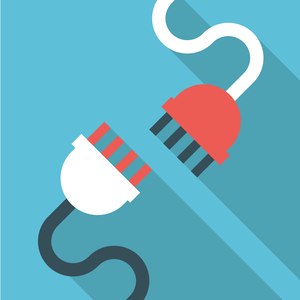
5 Steps for IELTS Process Charts
Ielts process chart: question #1, ielts process chart: question #2, ielts process chart: question #3, ielts process chart: question #4, step 1: analyse the question.
IELTS process charts are easy to analyse, but there are 2 things to keep in mind;
Don’t Rush
Give yourself enough time to understand what’s happening and how all the stages of the process fit together.

Look Everywhere
IELTS process charts often have pieces of information in random places.
Your answer must include everything about the process, so be careful not to miss anything.
Step 2: Write the Paraphrase
To write the paraphrase, repeat whatever the statement from the question in your own words.
I have three pieces of advice for paraphrasing a question.
Don’t Waste Time
This is the least important sentence in your answer, so just write it and move on.
Don’t Get Stressed About Synonyms
Use as many of your own words as possible, but it’s not a big problem if you repeat some words from the question.

Don’t Focus on Individual Words
Many IELTS candidates paraphrase one word at a time, but this method makes it slow and more difficult.
Instead, break the sentence into chunks and paraphrase each piece, one at a time.
For example, I’ve divided the question statement below into three chunks, and I’ll rewrite each one in my own words.

This is my paraphrase;
The image outlines the way that crude oil and petrol are transported to a local petrol station.
Step 3: Write the Overview
The paraphrase and the overview together are the first paragraph of your answer.
An overview is a general description of the IELTS process chart that doesn’t mention any specific details.
It’s important to note that the overview is the most important part of your answers because an effective overview is essential for a high Task Achievement score.

Unique Overview Formula for IELTS Process Charts
Overview = ( First & Last Steps ) + ( Number of Stages ) + ( Methods, Tools or Influences )
Follow this formula, and you’ll always know what to put in your overview.
For example;
Overall, from first looking at the Academic Task 1 question to finishing the answer, there are four main steps in the answer-writing process which are all done manually using a pen and paper.
Let’s look at these in more detail.
First & Last Steps
This is the part of the example overview above that says; ‘ from first looking at the Academic Task 1 question to finishing the answer, ‘
You can copy the names of the steps from the question or use different vocabulary if possible.

Sometimes, the stages in the process are not numbered, so you will need to decide where the process starts and ends.
For example, in the image below, you could say that the process begins with the adult fish or that the process begins with the eggs. Either one is acceptable.

Number of Stages
This is the part of the example overview above that says; ‘ there are four main steps in the answer-writing process ‘
On occasion, it won’t be 100% clear how many stages there are, so you will need to decide.
The IELTS examiner will understand if the process chart Task 1 question wasn’t clear, so whatever you decide will be accepted.
For example, in the process below, to say that there are any number between 7 and 9 stages would be acceptable.

Methods, Tools or Influences
This is the part of the example overview above that says, ‘ which are all done manually using a pen and paper .’
What you include will vary depending on whether the process is man-made or natural .
Man-Made Processes
If the process is man-made, you can describe if the stages are done manually or by machinery.
For example, in the process below, you can say that many of the stages are automated, and some need to be done manually.

Natural Processes
If the process shown is a natural one, you can describe external influences such as the factories, plants and animals involved in the process below.

Step 4: Write the Details Paragraphs
We refer to the next two paragraphs as the details paragraphs because this is where you describe the specific details of the IELTS process chart.
Discuss roughly half of the stages in the first details paragraph and the rest in the second details paragraph.
For example, the process below has 9 stages, so you will need to decide if your first details paragraph will describe the first 4 or the first 5 stages.

Vocabulary for Details Paragraphs
All parts of the process chart Task 1 question will be labelled, so you don’t need to know about the process before your IELTS test.
However, you must have a range of sequence words.
The following text contains the type of sequence words you can use.
First of all , the question needs to be analysed in detail, and after that, the paraphrase and overview are written. Then the first details paragraph is written before the second details paragraph. Following that , the finished answer is proofread, and from this , mistakes are found and fixed. Later , when the examiner is marking the essay, there will be fewer vocabulary and grammar errors. Next , the examiner will award a high score, and subsequently , you will have a very good reason to celebrate.
Grammar for Details Paragraphs
Because you need to describe the process, not the people doing the process, you will need a firm grasp of how and when to use passive voice .
Besides that, present simple is the predominant grammar tense in a process chart Task 1 answer because this is the tense used to describe facts.
Step 5: Proofread Your Answer
This is a vital step to help improve your Task 1 score .
Every vocabulary and grammar mistake you find and fix will contribute to a higher band score .
Before your IELTS test, you should know what grammar mistakes you typically make so that you can focus on fixing as many of those as possible.

You can also use this as an opportunity to increase the range of your vocabulary.
For example, if you’ve used the word ‘then’ several times, you can replace it with other sequence words.


IELTS Process Chart: Sample Answer #1
The image illustrates a flower’s lifecycle and the several phases that it undergoes during this process. Overall, from a seed growing into a plant that is capable of producing its own seeds, there are eight main stages, and only one of these requires external influences. At the beginning of the cycle, the flower starts as a seed, and in the next phase, the seed is planted and watered. From here, the seed germinates, and roots begin to appear on its underside. In the next stage of the development of the flower, it grows leaves and is known as a sprout. After one week as a sprout, it becomes a seedling with more leaves that are bigger than the ones it previously had. During phase six, it becomes a plant with buds, which, after a week, grow into flowers. The final stage sees the flower become a plant with fruits, and subsequently, the cycle returns to its initial stage with the production of seeds.
Comments on Sample Answer #1
Include everything.
The parts of this question that say ‘1 week’ and ‘3 days’ are easily forgotten as they’re not part of the main text.
Make sure to look out for pieces of information like this and include them all in your answer.

Overview Language
In the overview, we can’t include specific information or descriptions.
This is why I described the person planting the seed as an external influence.
Cyclical Processes
Some processes are linear, where there is a definitive start and end.
Other processes are cyclical, which means that the final stage leads back to the first.
The process we just looked at is cyclical, which is why the last sentence in the sample answer makes it clear that stage 8 continues to stage 1.

IELTS Process Chart: Sample Answer #2
The image illustrates the several phases involved in the water cycle. Overall, from precipitation to the reformation of dark clouds, the process that water goes through has ten main phases, is entirely natural and involves mountains, rivers and trees. The first stage in the process is when the water falls from dark clouds in the form of precipitation. Some of this water lands on mountains where it flows downwards into rivers that flow through the land below. Other water from the dark clouds falls directly onto the ground, where it infiltrates the existing groundwater, which flows below. There are two ways in which the water ascends back into the air above; the first of which is evaporation, where the water comes directly from the rivers. The second route is through plants that have taken up groundwater and released it into the air through the process of transpiration. Once in the air, the water condenses into white clouds, which then transport the water to the dark clouds, and the cycle repeats itself.
Comments on Sample Answer #2
Where’s the beginning.
In this question, the stages aren’t numbered.
This means that we must decide which are the first to last stages.
I decided to start with precipitation, but you can choose a different stage if you feel it’s more logical.

Logical Organisation
In the first details paragraph, I started with precipitation because, in the overview, that’s what I said the first stage was.
Then I decided to split up the information by describing the stages where the water that moves downwards in the first details paragraph and everything else in the second.
Don’t Include Your Own Knowledge.
If you have extra knowledge about the process in the question, don’t include it in your answer.
For example, we know that the heat from the sun is involved in the water cycle process.

However, that information isn’t in the IELTS process chart, so we don’t include it in our answer.
Ambiguous Information
Sometimes information in the image won’t be completely clear.
For example, the stage labelled ‘transport’ in the question above could be interpreted several ways.
In the sample answer, I said that the white clouds transport the water to the dark clouds.
This is not what happens in the real world, but it does reflect what’s shown in the image, which means that my description is acceptable.

IELTS Process Chart: Sample Answer #3
The image outlines the several phases necessary for the production of coffee products. Overall, from the plant which they grow on to becoming commercial products, the coffee-production process includes eight main steps, some of which require manual labour and others involving different types of machinery. The first step occurs one time every year, and this is where the coffee beans are harvested from the plant by hand. After that, they are added to a machine that processes the beans before they are left under the sun, where they dry for between 24 and 72 hours. Subsequently, they are placed into another machine which is used to hull the dried coffee beans. In the next stage, the beans are roasted for 10 to 20 minutes in a hand-operated oven. An automated apparatus then packages the roasted coffee beans into paper or plastic bags. The packaged coffee is then loaded into a truck for delivery, and, in the final phase, various coffee products are purchased.
Comments on Sample Answer #3
Overview vocabulary.
Sometimes it’s possible to avoid using the words from the question in the overview.
For example, instead of writing ‘ to the purchase of coffee products ‘, I wrote ‘ to becoming commercial products ‘.

However, I’ll only do this when I’m 100% confident that the language is accurate and my description is clear.
Being More Descriptive
We must adapt the amount of detail we include so that our answers aren’t too long or too short.
While writing the final paragraph, I realised that it would be too short, so I adapted my writing to be more descriptive.
If I hadn’t done that, this is what the paragraph would have looked like;
In the next stage, they are roasted for 10 to 20 minutes before they are packed into paper or plastic bags. These bags are then delivered, and, in the final phase, the coffee is purchased.

IELTS Process Chart: Sample Answer #4
The image outlines the several phases required to publish a book. Overall, from the point of writing a book until it is sold in bookshops, the book-publishing process includes nine main steps, some of which are carried out manually and others that require the aid of machinery. The entire process takes approximately 18 to 24 months to complete, and the first step is where a book is written by an author using a typewriter. After this, the book is sent to a publishing house where the author’s work is studied by editors before a contract is made between the publishing house and the author. Once the contract is signed, the task of designing the layout begins and continues until a final decision and the best layout is made. In the next phase, a printer is used to produce the book’s pages that are then bound together in the eighth step of the process. The final stage in the process is where the books are distributed to bookshops.
Comments on Sample Answer #4
Analysing the question.
This question also has information that can be easily forgotten.
Where it says ‘Approx. 18-24 months’ could be easily excluded from the answer, but without that information, the Task Achievement score would suffer.
Linear, not Cyclical
Even though the stages in this chart are arranged in a circle, it is not a cyclical process.
This is because there is no arrow pointing from stage 9 to stage 1, and that’s how we know it’s a linear process.

If my answer suggested that it was cyclical, that would reduce my Task Achievement score.
The next thing to do is practise answering IELTS process chart questions.
You won’t find a lot of these online, so you can sign up for my newsletter for more of these.
Besides process questions, in Academic Writing Task 1, you can also get a map question , but you’re far more likely to get a graph question .
You can also review this lesson on process questions with the video below.
Finally, make sure that you’re fully prepared for whatever you get with my complete set of Academic IELTS Writing Task 1 Lessons .
Privacy Overview
IELTS Writing Task 1 – Process Example Essay 2
In this post, we will look at a Writing Task 1 Academic process essay example from the IELTS writing task 1 Academic Test. Students often ask if the questions are repeated year after year and the answer is no, but the type of chart, graph or process can be.
There are so many questions written each year, you may find you practice answering various questions on different topics. It is best practice to learn how to answer each one of the various types of writing task 1 questions , from bar charts, line graphs, maps, process etc.
If you would like to learn how to structure a process essay please click the button below >
Take a look at the IELTS Writing Task 1 Academic essay example below >>
*This process question and answer were provided by a student. IELTS Achieve did not design this question*
The picture shows the procedure of how to create bricks to be used in construction.
Overall, it can be observed that there are eight stages in the process, beginning with the digging of clay by the digger and ending with the bricks being delivered to different building sites.
To begin with, clay is collected by a bulldozer and then taken to a metal grid with a roller to press the clay and to incorporate sand and water. After this, the processed clay will then be subjected to a moulder or a wire cutter machine to form the clay into bricks.
In the subsequent stage, the newly formed brick will be placed in a drying oven where it will stay for about 24-48 hours. Next, the bricks will rest in two different chambers with temperatures ranging from 200 0C-9800C (1st chamber) and 8700C- 13000C ( 2nd chamber) respectively. Afterwards, the bricks will be exposed to a cooling chamber for about 48-72 hours and then later will be packed. Finally, the bricks are then stored and delivered to different construction sites.
Word count – 179 / Band score 8

- Task Achievement – The answer provides a paraphrased question, to begin with, followed by an overview that gives the reader key information.
- Coherence and Cohesion – The answer has been divided into clear logical paragraphs.
- Lexical Resource – There is evidence of paraphrasing, synonyms and some less common words.
- Grammatical Range and Accuracy – The answer has no grammatical errors. The sentences are mainly made up of multiple clauses and have a variety of structures.
We hope you found this post useful in helping you to study for the IELTS Test . If you have any questions please let us know in the comments below or on the Facebook page.
The best way to keep up to date with posts like this is to like us on Facebook , then follow us on Instagram and Pinterest . If you need help preparing for the IELTS Test, join the IELTS Achieve Academy and see how we can assist you to achieve your desired band score. We offer an essay correction service, mock exams and online courses.
Related Posts
![how to write a process essay ielts You have been to a business meeting at another company and saw a piece of equipment which can be useful for your company too: Semi-Formal Letter [IELTS General Writing Task 1 ]](https://www.ieltsachieve.com/wp-content/uploads/2023/08/You-have-been-to-a-business-meeting-at-another-company-and-saw-a-piece-of-equipment-which-can-be-useful-for-your-company-too-Semi-Formal-Letter-IELTS-General-Writing-Task-1-.png)
You have been to a business meeting at another company and saw a piece of equipment which can be useful for your company too: Semi-Formal Letter [IELTS General Writing Task 1 ]
You should spend about 20 minutes on this task. You have been to a business…

Writing Task 1 Academic – Band Score 7
Most of the students studying for the IELTS Test have said they find the IELTS…
- IELTS Scores
- Life Skills Test
- Find a Test Centre
- Alternatives to IELTS
- Find Student Housing
- General Training
- Academic Word List
- Topic Vocabulary
- Collocation
- Phrasal Verbs
- Writing eBooks
- Reading eBook
- All eBooks & Courses
- IELTS Writing Task 2
- IELTS Essay
How to Write an IELTS Essay
In this introductory lesson you will find some guidance on how you should write an IELTS essay .
There are then more lessons on the following pages for different types of essay and different questions, with lots of tips and strategies for achieving a high score.
You can also watch a video of this lesson:

Essay Types
It is important to learn about IELTS essays because there are different essay types, and these will require different ways to answer them.
However, as you will see from the guidance on this page, they can all follow the same basic structure.
These are some of the types of IELTS essays you can get in the test:
- Agree / disagree
- Discuss two opinions
- Advantages & disadvantages
- Causes (reasons) & solutions
- Causes (reasons) & effects
- Problems & solutions
Not every essay will fit one of these patterns, but many do.
You may get some of these tasks mixed up. For example, you could be asked to give your opinion on an issue, and then discuss the advantages or disadvantages of it.
The golden rule is to ALWAYS read the question very carefully to see exactly what you are being asked to do.
The second lesson explains more about analysing essay questions.
How do I Write an IELTS Essay?
In order to answer this, lets first look at a sample question:
You should spend about 40 minutes on this task.
Write about the following topic:
In the last 20 years there have been significant developments in the field of information technology (IT), for example the World Wide Web and communication by email. However, these developments in IT are likely to have more negative effects than positive in the future.
To what extent do you agree or disagree?
Give reasons for your answer and include any relevant examples from your own experience or knowledge.
Write at least 250 words.
An IELTS essay is structured like any other essay; you just need to make it shorter. There are three key elements:
- Introduction
- Body Paragraphs
We will look at each of these in turn, using the essay question above as an example.
1) Introduction
You should keep your introduction for the IELTS essay short. Remember you only have 40 minutes to write the essay, and some of this time needs to be spent planning. Therefore, you need to be able to write your introduction fairly quickly so you can start writing your body paragraphs.
You should do just two things:
- State the topic of the essay, using some basic facts (that you may be able to take from the question)
- Say what you are going to write about
Here is an example introduction for the above essay question about IT:
The last two decades have seen enormous changes in the way people's lives are affected by IT, with many advances in this field. However, while these technological advances have brought many benefits to the world, I strongly believe that these developments in IT will result in more negative impacts than positive.
As you can see, the first sentence makes sure it refers to the topic (IT) and uses facts about IT taken from the question. Note that these are paraphrased - you must not copy from the rubric!
The second part then clearly sets out the what the essay will be about and confirms the writers opinion (some questions may not ask for your opinion, but this one does). The writer clearly agrees as he/she thinks there will be more negative impacts.
View this lesson for more advice on writing IELTS essay introductions.
2) Body Paragraphs
For an IELTS essay, you should have 2 or 3 body paragraphs - no more, and no less.
For your body paragraph, each paragraph should contain one controlling idea, and have sentences to support this.
Lets look at the first paragraph for the essay about IT. The essay is about the benefits and drawbacks of IT, so these will need to be discussed in separate paragraphs.
Here is the first body paragraph:
On the positive side, email has made communication, especially abroad, much simpler and faster. This has resulted in numerous benefits for commerce and business as there is no need to wait weeks for letters or take time sending faxes, which was the case in the past. Furthermore, the World Wide Web means that information on every conceivable subject is now available to us. For example, people can access news, medical advice, online education courses and much more via the internet. These developments have made life far easier and more convenient for many.
The controlling idea in this first paragraph is the 'benefits of IT', and there are two supporting ideas, which are underlined. No drawbacks are discussed as the paragraph would then lose coherence.
Most of the essay will focus on the negative aspects of IT, as the writer says there are more negative effects in the introduction. So the next two paragraphs are about these.
The topic sentence in the next paragraph therefore tells us we are changing the focus to the negative points:
Nevertheless, the effects of this new technology have not all been beneficial. For example, many people feel that the widespread use of email is destroying traditional forms of communication such as letter writing, telephone and face-to-face conversation. This could result in a decline in people's basic ability to socialize and interact with each other on a day-to-day basis.
The final body paragraph gives the last negative effect:
In addition, the large size of the Web has meant that it is nearly impossible to regulate and control. This has led to many concerns regarding children accessing unsuitable websites and the spread of computer viruses. Unfortunately, this kind of problem might even get worse in the future at least until more regulated systems are set up.
3) Conclusion
The conclusion only needs to be one or two sentences, and you can do the following:
- Re-state what the essay is about (re-write the last sentence of your introduction in different words)
- Give some thoughts about the future
Here is an example:
In conclusion, developments in IT have brought many benefits, yet I believe that these are outweighed by the drawbacks. In the future these will need to be addressed if we are to avoid damaging impacts on individuals and society.
The Full IELTS Essay
The last two decades have seen enormous changes in the way people's lives are affected by IT, with many advances in this field. However, while these technological advances have brought many benefits to the world, I strongly believe that these developments in IT will result in more negative impacts than positive.
Nevertheless, the effects of this new technology have not all been beneficial. For example, many people feel that the widespread use of email is destroying traditional forms of communication such as letter writing, telephone and face-to-face conversation. This could result in a decline in people's basic ability to socialize and interact with each other on a day-to-day basis.
(290 Words)
The IELTS essay introduction talks in general about the increasing use of IT, thus introducing the topic well. The thesis then clearly sets out the writers opinion.
The following paragraph mentions the present benefits of these developments, but the opening sentence in the third paragraph is a qualifying statement (Nevertheless, not all the effects... ), so the writer can now focus on the negative elements.
The fourth paragraph provides two other negative examples (lack of regulation, viruses). Both paragraphs suggest that these problems will continue in the future.
The essay concludes with a clear opinion that agrees with the statement.
Overall, it is a well-balanced text that mentions the present situation ( ...this has made life.. .) but importantly, also refers to the future of IT (. ..likely to increase..., might get worse. ..).
Now you know the basics of writing an IELTS Essay, you can go on and look at further sample essays or if you prefer, check out the next lessons for Writing Task 2.
More Task 2 IELTS Lessons:

Using Pronouns to Improve IELTS Essay Coherency
Find out how to use pronouns to improve your coherency for IELTS task 2 essays.
Transitional Phrases for Essays
Learn transitional phrases for essays to get a band 7 or higher in your IELTS writing for coherence and cohesion.
Writing an IELTS Essay Conclusion
The IELTS essay conclusion is the final part of your IELTS essay. This lesson guides you on how to write a conclusion quickly but effectively.
Writing an IELTS Essay Introduction
Tips on how to write an introduction for an IELTS essay introduction in a quick and easy way.
IELTS Music Essay: Understanding a Complex Question
An IELTS essay about music is used to show you how to answer a more complex IELTS essay question that does not have a clear 'task' given to you.
IELTS Problem Solution Essay Strategies and Tips
In IELTS problem solution essays you have to discuss a particular issue and present ideas to solve that problem.
How to Identify the Task in an IELTS Essay
Learn how to identify the task in an IELTS task 2 essay question. This is one of the most important steps in responding to an essay question.

IELTS Task Response - 25% of your essay grade
The IELTS Task Response criteria in the scoring makes up 25% of your band score for your essay.
Tips on How to Score IELTS Band 8 in Writing and Speaking
To score IELTS Band 8 you need to understand exactly what is in the IELTS Band Descriptors for an 8 for writing and speaking first.
Using Substitution in IELTS to Improve Writing Coherency
You can use substitution in your IELTS essays in order to improve coherency and coherence.
Thesis Statement Tips for IELTS Essays
Your thesis statement in an IELTS essay should be written quickly and concisely. Use these tips to do that.
How to Identify the Topic of an IELTS Essay Question
In IELTS you must identify the topic of your essay as this is a key to making sure your essay is on topic.
Can you use Personal Pronouns in Essays for IELTS?
Learn how to use personal pronouns in essays for IELTS correctly. Can you use "I", "we" and "you"?

Generating ideas for IELTS essays for writing task 2
Generating ideas for IELTS essays for writing task 2 can be difficult but complex ideas are not expected.
How to use brainstorming and planning to generate essay ideas.
Brainstorming and planning is a key step in developing your IELTS essay. This lesson has tips on how to coming up with ideas and organising them.
IELTS Advantage Disadvantage Essay Tips and Strategies
An advantage disadvantage essay is one type of essay that you may get in the test. This lesson shows how to write a pros cons essay.
The 3 Types of IELTS Opinion Essays in IELTS
IELTS opinion essays in IELTS can be placed into three types. This lesson explains the different types and how to analyse these essay questions.
Paragraph Writing for IELTS: Building strong arguments
This paragraph writing lesson provides tips on constructing the best paragraphs for your IELTS essay.
Requirements for IELTS Band 7 in Writing
Getting to an IELTS Band 7 is a struggle for many candidates. This lesson explains exactly what you have to do to reach this band score.
Improving Writing Coherence for IELTS essays
25% of the writing grade is on how you organise your essay so this lesson shows you how to improve your writing coherence.
Any comments or questions about this page or about IELTS? Post them here. Your email will not be published or shared.
Before you go...
Check out the ielts buddy band 7+ ebooks & courses.

Would you prefer to share this page with others by linking to it?
- Click on the HTML link code below.
- Copy and paste it, adding a note of your own, into your blog, a Web page, forums, a blog comment, your Facebook account, or anywhere that someone would find this page valuable.
Band 7+ eBooks
"I think these eBooks are FANTASTIC!!! I know that's not academic language, but it's the truth!"
Linda, from Italy, Scored Band 7.5

IELTS Modules:
Other resources:.
- All Lessons
- Band Score Calculator
- Writing Feedback
- Speaking Feedback
- Teacher Resources
- Free Downloads
- Recent Essay Exam Questions
- Books for IELTS Prep
- Student Housing
- Useful Links

Recent Articles
Alternatives to the IELTS Exam
Mar 22, 24 12:32 PM
Common Questions about the IELTS Speaking Test
Mar 09, 24 05:28 AM
IELTS Computer Delivered Practice Tests Plus Band Score
Mar 01, 24 02:38 AM
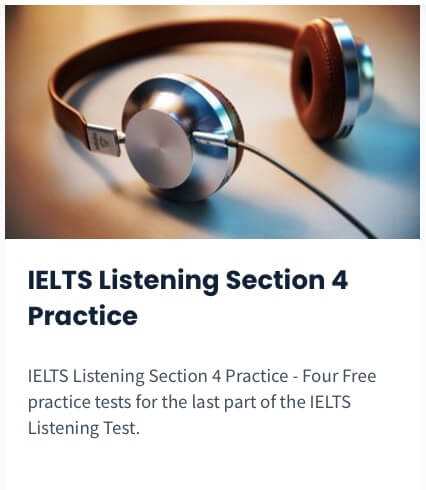
Important pages
IELTS Writing IELTS Speaking IELTS Listening IELTS Reading All Lessons Vocabulary Academic Task 1 Academic Task 2 Practice Tests
Connect with us
Copyright © 2022- IELTSbuddy All Rights Reserved
IELTS is a registered trademark of University of Cambridge, the British Council, and IDP Education Australia. This site and its owners are not affiliated, approved or endorsed by the University of Cambridge ESOL, the British Council, and IDP Education Australia.
Welcome Guest!
- IELTS Listening
- IELTS Reading
- IELTS Writing
- IELTS Writing Task 1
- IELTS Writing Task 2
- IELTS Speaking
- IELTS Speaking Part 1
- IELTS Speaking Part 2
- IELTS Speaking Part 3
- IELTS Practice Tests
- IELTS Listening Practice Tests
- IELTS Reading Practice Tests
- IELTS Writing Practice Tests
- IELTS Speaking Practice Tests
- All Courses
- IELTS Online Classes
- OET Online Classes
- PTE Online Classes
- CELPIP Online Classes
- Free Live Classes
- Australia PR
- Germany Job Seeker Visa
- Austria Job Seeker Visa
- Sweden Job Seeker Visa
- Study Abroad
- Student Testimonials
- Our Trainers
- IELTS Webinar
- Immigration Webinar
IELTS Writing Task 1 Process Chart 2024 – Process Diagram with Sample Answers
Updated On Mar 05, 2024

Share on Whatsapp
Share on Email
Share on Linkedin
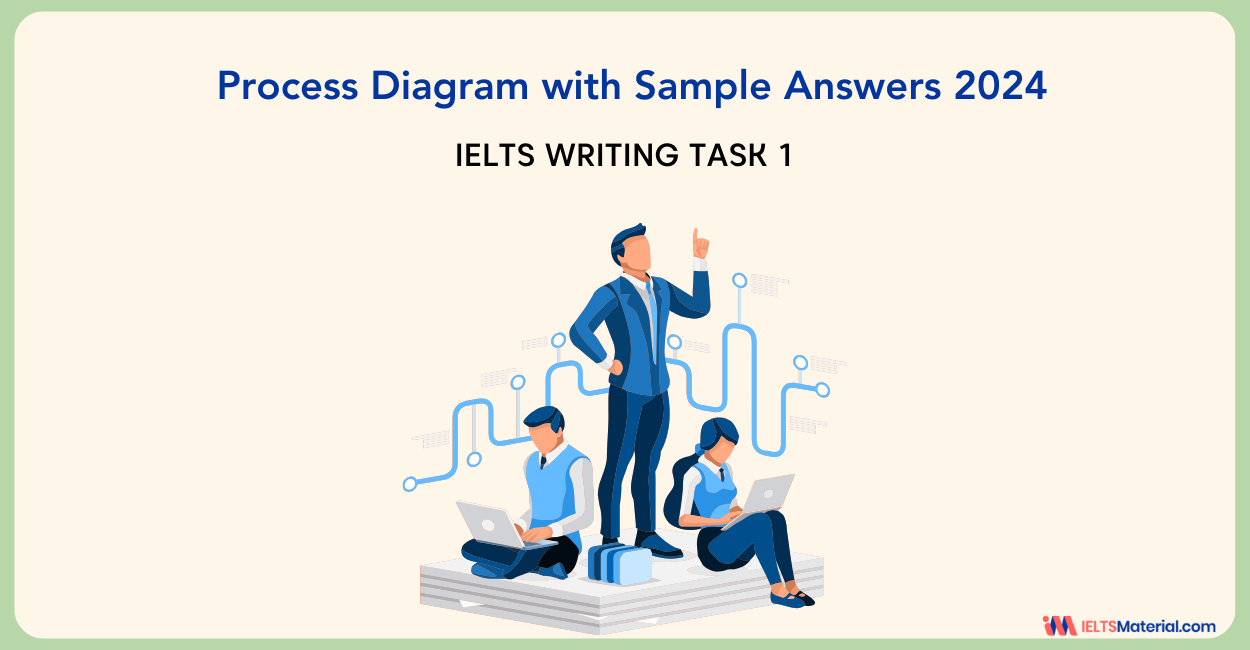
Effective IELTS Essay Connectors for Writing Task 2 & Task 1
Writing Task 1 is different for IELTS Academic and General exams. While the Academic exam is based on report writing based on charts, graphs, diagrams and processes, the General counterpart is a letter-writing task. So, in this article, we are going to discuss a crucial type of question that is given in Academic test, which is, Process chart.
What is an IELTS Process Chart?
When we talk about the IELTS Academic writing task 1 , the process chart is one of the most commonly asked questions in the exam. A IELTS process chart is a graphical/pictorial illustration of a cycle or a sequence of events that occur in a process. Whenever the IELTS Academic Writing task 1 asks you to elucidate a process chart, you are expected to depict the chart and explain the sequence provided in the chart. You are scored on the basis of your comprehension of the process chart, the way you explain it, the aptness of the vocabulary , the construction of the sentences, and the soundness of grammatical usage .
Types of IELTS Process Charts
There are two types of IELTS process charts that are asked in Academic Writing task 1. The first one is a Natural process , and the second one is the Manufacturing process.
The Natural process Chart
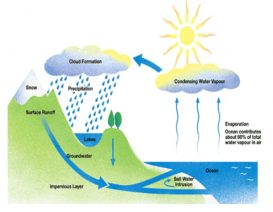
The Natural process chart talks about a naturally occurring phenomenon, for example, the Hydrological cycle , Carbon cycle, Respiration in plants, etc.
The Manufacturing process chart
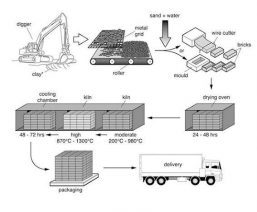
The Manufacturing process depicts a man-made process, for example, manufacturing pulp and paper , glass manufacturing process, steel manufacturing process and so on.
How to attempt a IELTS Process Chart Question?
A process chart question should first be understood and observed well. Once the chart is understood completely, the organization of the idea should be in a specific way keeping the word limit in consideration.
Introduction : First of all, the topic of the process chart should be introduced and paraphrased so that the reader has a fair idea about what the process chart is going to be about.
Overview : A brief extract of the process chart should be written such that it gives an overview of the chart. The number of steps could be mentioned in the overview. For example, you may mention that there are seven steps in the manufacturing of paper.
Body paragraphs: should focus on briefing the events of the process. This step could take 3-4 paragraphs, completely subjected to the events depicted in the diagram.
Don’t write a Conclusion : There is no summarization or inference made in the process chart questions. Hence, it must not be used.
In what tense should you write the IELTS Process Chart depiction?
The first and the foremost step that comes while deciding the tense in which the process is to be written is the uniformity. If the depiction is in present tense, ensure the uniformity throughout the text, and same goes for other tenses, i.e. past and at times in future tense (questions on projections and assumptions, etc.) Generally, when the questions involve a graphical depiction wherein the past years are mentioned, use past tense. When the question is to explain a process, for example in the following example, make use of present tense. When the question talks about the projection or estimation, let’s say 2050, then use future tense. Usage of tenses should be intelligently made.
What kind of vocabulary should be used in a process chart?
Talking about the vocabulary of the process chart task, there is a dedicated list of vocabulary that you have to use. Right from specific verbs to adverbs to adjectives , words should be chosen specifically while explaining a process chart such as creates, repeats, firstly, subsequently, sequentially, meanwhile, cyclical, linear, etc.
For example:
- This cycle repeats itself.
- Firstly, the raw materials are gathered followed by their processing. Meanwhile , the temperature of the furnace is increased.
- This process is a linear process that begins with the gathering of raw materials and finishes with the goods that are ready to be used.
The voice used in the texts
The voice used in explaining the process chart also plays a notable role. For a natural process, an active voice is used while a passive voice is used in the depiction of a Manufacturing process chart.
Now, we will make use of all that we learnt in the example given below and see how easy and appealing the process chart becomes.
Sample Example for Process Chart

Report Plan
Paraphrase : Illustrate; the recycling process of waste glass bottles.
Overview/Summary : Mention the three stages in the recycling process.
Paragraph 3: Describe the first and second stages of the recycling process.
Paragraph 4: sent to a glass factory; crushed into pieces; the process continues to get burnt; coupling of molten glass and new liquid glass.
Paragraph 5: Describe the final stage of the recycling process
Sample Answer
The diagram illustrates the process of recycling waste glass bottles.
We can observe from the diagram that there are three main stages in the recycling process, beginning with gathering the wasted glass bottles, the recycling of these bottles, and ending with the delivery of new products.
Firstly, wasted glass bottles are gathered at a collecting point . It is then transported to a recycling center/ cleaning plant by truck. Next, these are cleaned using high-pressure water to eliminate the dust and other substances before being classified into three kinds of bottles according to their color, such as brown, green and clear.
Later, these bottles are sent to a glass factory to be crushed into smaller pieces. The process continues wherein those pieces are burnt in a specific furnace at a high temperature of 600c – 800c to become molten glass. The recycled molten glass and new liquid glass are coupled together and poured into a glass mould to produce new bottles.
The new bottles are then filled with drinks, and the entire process of recycling glass concludes after these filled bottles are delivered to the supermarket .
Tips to Write IELTS Writing Task 1- Process Diagram
There are few tips, which have to be borne in mind while writing a process diagram.
Understand the marking criteria
You must know the marking scheme of this particular section. If you know on what basis the IELTS scores are given, you will be able to answer the question appropriately and also fulfil the expectations of the examiner.
Tips for paraphrasing the question
Paraphrasing is one of the key skills required in IELTS . Paraphrasing is nothing but replacing the words given in the question with synonyms . This may not be used only in the introduction, but also can be used in the sentences across the paragraphs. This will help you to achieve the desired band score.
Check your writing
Towards the end of the test, you will be given a few minutes to check the answers that you have written. Utilize this time to check for spelling mistakes , silly mistakes and grammar. Only accurate answers will help you achieve the desired result.
Get evaluated for FREE!
Got a quick report in your mind for this question. Don’t hesitate to post the same in our comment section. We will evaluate the report/letter and email you the band score & our trainer’s comments. And, this service is entirely free.
Also check :
- IELTS Writing task 1 tips
- IELTS Writing Answer sheet
- IELTS map vocabulary
- IELTS Writing Task 1 Connectors
- IELTS 2024 Study Plan for 1 month (30 Days) / 15 Days / 7 Days
Practice IELTS Writing Task 1 based on report types

Band 9 IELTS Vocabulary for Academic Writing Task 1 + PDF
Janice Thompson
Soon after graduating with a Master’s in Literature from Southern Arkansas University, she joined an institute as an English language trainer. She has had innumerous student interactions and has produced a couple of research papers on English language teaching. She soon found that non-native speakers struggled to meet the English language requirements set by foreign universities. It was when she decided to jump ship into IELTS training. From then on, she has been mentoring IELTS aspirants. She joined IELTSMaterial about a year ago, and her contributions have been exceptional. Her essay ideas and vocabulary have taken many students to a band 9.
Explore other sample Process Diagrams
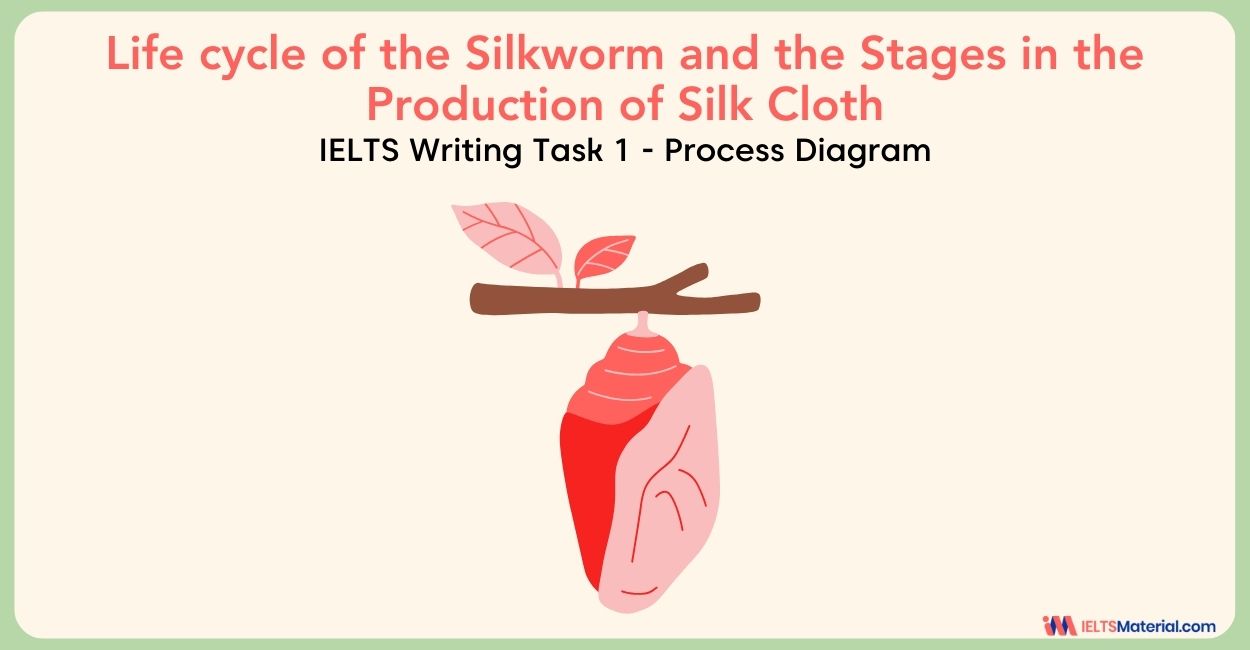
Courtney Miller

Post your Comments
Recent articles.
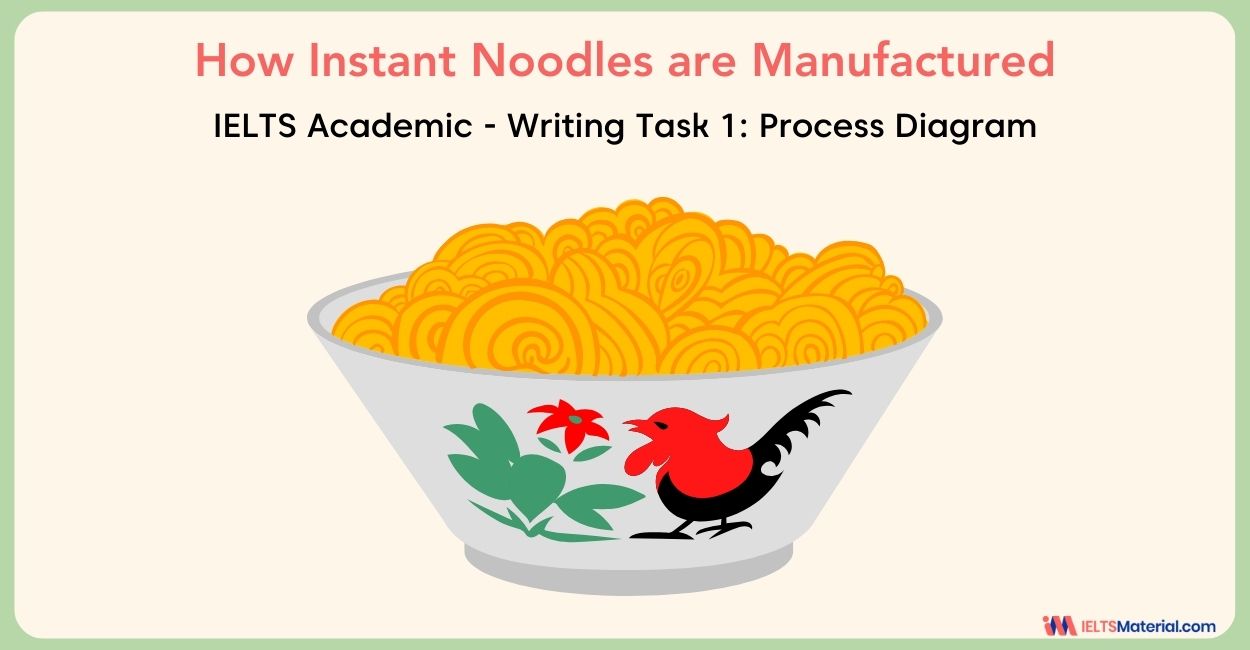
Kasturika Samanta
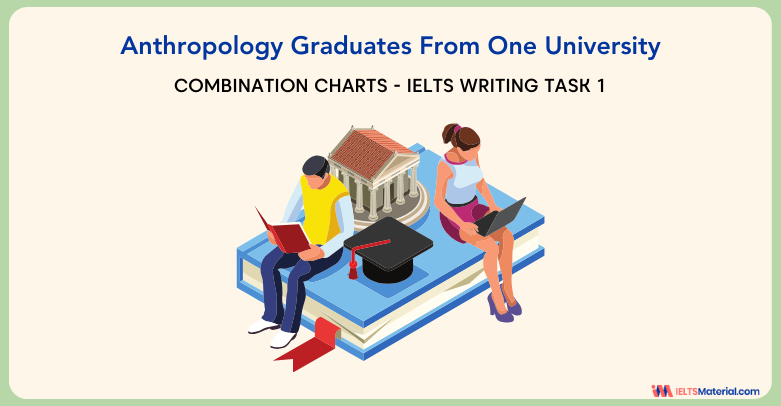
Nehasri Ravishenbagam
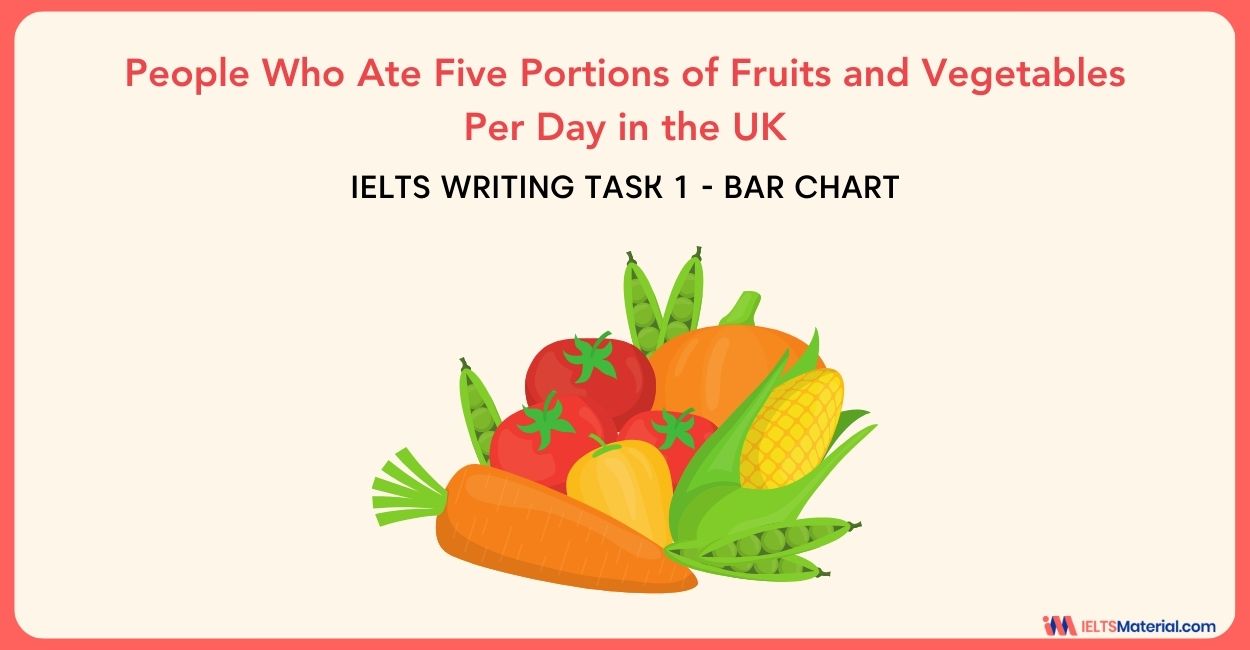
Raajdeep Saha
Our Offices
Gurgaon city scape, gurgaon bptp.
Step 1 of 3
Great going .
Get a free session from trainer
Have you taken test before?
Please select any option
Get free eBook to excel in test
Please enter Email ID
Get support from an Band 9 trainer
Please enter phone number
Already Registered?
Select a date
Please select a date
Select a time (IST Time Zone)
Please select a time
Mark Your Calendar: Free Session with Expert on
Which exam are you preparing?
Great Going!
- What can IELTS do for you
- Ways to take IELTS
- Who accepts IELTS?
- Sample test questions
- IELTS Trial Test
- Understanding your score
- Trust IELTS
- On test day
- Test centres
- IELTS One Skill Retake
- Cancellations, refunds...
- Access arrangements
- Getting and sharing...
- Improving your results
- Academic Institutions
- Why accept IELTS?
- IELTS Scoring
- Compare IELTS
- IELTS for your sector
- Get started with IELTS
- Verifying IELTS results
- Research reports
- Test statistics
- Research funding
- Awards and scholarships
- Previously funded...
- News and Insights
Need help finding something? Enter a search term below

10 steps to writing high-scoring IELTS essays
Date Published
01 February 2023
This article was first published on IELTS.IDP.com
Whether you take the General Training or Academic IELTS test, the second writing task is writing an essay in response to a problem or argument. Here are 10 easy steps, with lots of tips, to guide you on how to write high-scoring essays.
How is the IELTS essay component marked?
Fairness and accuracy are critically important when marking IELTS writing tasks . Your essay will be marked by at least two experienced IELTS examiners on the following criteria:
- Task response - Whether you answered the question fully and supported your answer well.
- Coherence and cohesion - How well you linked your ideas together.
- Lexical resource - Whether you used a wide range of vocabulary correctly and appropriately.
- Grammatical range and accuracy - How many grammatical structures you used accurately and appropriately.
Each of these criteria is worth 25 percent of your total score for the essay writing task. Both of your writing tasks are used to calculate your overall writing band score.
How to write high-scoring essays in 10 easy steps
Step one: plan your time.
The Writing test (consisting of Writing tasks 1 and 2) takes approximately 60 minutes. Plan to spend around 20 minutes on your first task, and 40 minutes on your essay task. A sample plan for your time might be:
- 5 to 10 minutes reading the essay question and planning your answer
- 15 to 20 minutes writing your first draft
- 10 minutes proofreading and editing your essay
How to write a good introduction
Step two: Read the question
While you may be anxious to jump straight into writing, make sure you take the time to carefully read the essay question. If you misunderstand the question, you risk writing an essay that does not address the issues properly which will lower your score.
Top 10 podcasts to help you improve your English
Step three: Highlight the issues to address
There will be multiple issues that you will need to address in your essay. Addressing each issue individually is key to achieving a high essay score. Highlight each individual issue that you will need to address.
The A to Z of IELTS: E is for Essays
Step four: Outline your response
Create an outline of how you will respond to the issues in your essay. This will serve as your ‘blueprint’ when you write your first draft. As a general rule your essay should have:
- An introduction stating what you will talk about
- Two or three body paragraphs , each addressing one issue or idea
- A conclusion summing up what was discussed in the essay
Make sure you note which idea or issue you will address in each paragraph. Check that the issues you highlighted are all accounted for in your outline.
Step five: Expand on your ideas
Write some notes about any key points or ideas you’d like to include in each paragraph. When you’re writing your first draft, these notes will help to make sure you don’t forget any ideas you want to include.
Mind maps to build your vocabulary resource for IELTS
Step six: Plan how you will connect your ideas
Connecting your ideas clearly and correctly is critical to achieving a high essay score. Try to use a range of linking words to make your essay easy to read. You can use connecting devices and phrases to:
List connected ideas
- ‘Firstly, secondly, thirdly’
- ‘Furthermore’
Provide more information
Compare ideas.
- ‘On the other hand’
- ‘Alternatively’
Don’t fall into the trap of trying to put a linking word in every sentence. Essays will score higher when the writer uses linking words only where necessary and appropriate.
Step seven: Write your first draft
Now that you’ve planned your essay, it’s time to write your first draft. Follow the outline you’ve created and expand on the notes and ideas you included there.
- Avoid informal language unless it is appropriate.
- Avoid spelling and grammatical errors where possible.
- Use a mix of sentence structures such as simple sentences, complex sentences and compound sentences.
How to boost your IELTS Writing score
Step eight: Proofread your essay
When you have completed the first draft of your essay, it’s important to proofread it. Read your essay from start to finish.
You can read it silently, but it may help to read it out loud if you can do so without disturbing others. Make a mental note or mark your paper anywhere that you may need to fix an issue.
How to access FREE official IELTS mock tests
Step nine: Edit your essay
Carefully go through the issues you noted while proofreading. Edit or rewrite these until they look and sound correct. Examples of issues and how to edit them may include:
- The sentence is too long. A sentence is probably too long if you need to take a breath in the middle of reading it. Try splitting this up into smaller sentences.
- A sentence sounds strange when you read it out loud. Try using different words or punctuation until it sounds right. It may need to be connected to another sentence.
- The same word appears many times. Think about any other words you could use instead.
There is more than one main idea in each paragraph. Move any unrelated sentences to the correct paragraph. Each paragraph should address one issue only.
IELTS Writing: How to organise your responses
Step 10: Proofread your essay again
After your edits and before submitting your essay , give it one final proofread. Make sure you have:
- Included all the points you highlighted in step three
- Followed your outline from step four
- Used good connecting words from step six
- Fixed any errors or issues in step nine
IELTS Writing: 8 steps towards a band 8
Why choose IELTS?
IELTS is widely recognised by businesses and universities globally, and is the only English language competency test approved by all four of the following countries:
- New Zealand
With convenient computer and paper based test options, your IELTS test can be completed in a way that you’re most comfortable with. If you’re in a hurry, you could even have your test results back within two to five days!
Also, the IELTS Familiarisation test is designed to give test takers an idea of what to expect on the actual IELTS test. It includes sample questions from different part of the test, such as Listening, Reading, and Writing. Set yourself up for success and explore our extensive library of preparation materials today.
- Accessibility
- Legal & policies
2024. IELTS is jointly owned by the British Council; IDP IELTS; and Cambridge University Press & Assessment

Learn This Writing Process
Follow this step-by-step process to produce well structured essays that please the examiners.
- Identify the essay question type. There are several different types of questions and each question type requires a particular type of structure to answer it effectively. Read how to identify question types here .

2. Generate ideas and plan your essay. A simple yet important process that will ensure you answer the main parts of the question and not run out of time. Read more about essay planning and idea generation here .
3. Write the introduction. Most introductions can be done quite simply and quickly in just 3 or 4 sentences, learn how to write introductions here .
4. Write main body paragraphs. Using your essay plan you should be able to write body paragraphs with real purpose. Discover how to write main body paragraphs here .
5. Add your conclusion. A short but important paragraph that summarises your main ideas. Learn how to write effective conclusions here .
6. Check your essay. An essential part of writing is to check for errors. This is really important in IELTS tests as simple mistakes can effect your band score. Discover how to check your essay efficiently here .
The more you practice this process the more confident you will become. Following the same process each time helps to eliminate nerves on exam day, it prevents you from making silly mistakes and means you will produce a well structured essay every time.
IELTS Writing Task 2 Practice Questions
Recent IELTS Essay questions as reported by recent test takers from around the world. Here we have compiled recent questions reported to us, and other reliable sources, that appeared in recent tests.
IELTS Essay questions by topic area This is where you want to go if you want to practice certain topics as there are separate pages for each topic. Questions are also categorised by type i.e. discussion, opinion, and situation question types.
Recent IELTS essay questions and model answers from 2018 This is a pdf download full of questions and model answers, along with my special coaching points, techniques and tips!
Back to IELTS Writing Task 2 Main Page
IELTS Writing Task 1 (Academic)
Discover how to describe all types of visual data that you may see in this part of the test.

IELTS Listening
Sshhhhh! Listen closely, here are some valuable tips, techniques and strategies for maximising your listening band score.

IELTS Writing Task 1 (General)
Discover how to write in the correct format and tone for this part of the test.

IELTS Speaking
Learn 'what' to say and 'how' to say it in each part of the test to impress the examiner.

IELTS Writing Task 2
Discover the 5 step process for writing band 7 essays in 40 minutes or less.

IELTS Reading
Here we reveal the best method for completing each part of the reading test.
Copyright 2017 - IELTS Freeway - All Rights Reserved
Powered by OptimizePress 2.0
- Skip to primary navigation
- Skip to main content
- Skip to primary sidebar
IELTS Training with Jonathan
Helping Busy People Succeed in IELTS.
How to write an IELTS Essay – Food Process Task 1 Essay – Practice 8
By ielts-jonathan.com on 20 August 2021 0
What are good methods for Writing an IELTS Essay
Good teachers will not only ask IELTS students to write essays, they will also try to check whether the level and knowledge of vocabulary and grammar awareness is adequate to produce an IELTS Band 6, 7 or 8 essay.
Using tests to check IELTS vocabulary and grammar.
A very good way that teachers can check how much a candidate can produce is by construction awareness tests like the following examples.
This test looks at producing a describing a process or diagram IELTS essay.
A further advantage is students can gain a good understanding of organisation, sentence structure and language choices suitable for IELTS academic writing as well as an enhanced awareness of topic ideas.
This is far better than the passive activity of reading and reviewing essays themselves , a technique often suggested by teachers of IELTS.
Instructions
Writing is a creative process and there is no one way to write an essay.
- Read and complete the essay.
- Once you have completed, check the answers .
- Reset the essay to the beginning and see how much and how quickly you can now complete the modal writing.
Writing an IELTS Task 1 – Describing a Process essay
⇒ Link to next essay
Reference Link
I’m Jonathan
I’ve taught IELTS and University English in more than a dozen universities and schools around the world.
I’m a parent, traveller and passionate about language teaching and helping students achieve their dreams.
Whilst living in Austria or working in Asia, I run IELTS courses to help students get to where they want to be.
If you are serious about IELTS, connect with me to see how I can help you.

Share this:
- Click to share on Twitter (Opens in new window)
- Click to share on Facebook (Opens in new window)
- Click to share on Pinterest (Opens in new window)
- Click to share on WhatsApp (Opens in new window)
- Click to share on Telegram (Opens in new window)
- Click to share on Tumblr (Opens in new window)
- Click to share on LinkedIn (Opens in new window)
- Click to print (Opens in new window)
Reader Interactions
Was this helpful leave a comment :) cancel reply, let me help you get the ielts result you need.
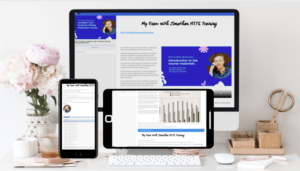
JUST WRITING FEEDBACK

Speaking Feedback
IELTS TRAINING
IELTS FEEDBACK
YOUR PRIVACY
TERMS AND CONDITIONS
- Skip to main content
IELTS Podcast
Pass IELTS with expert help.
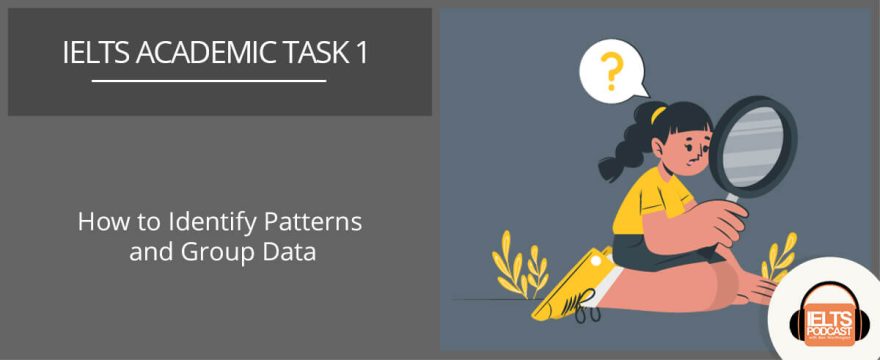
IELTS Academic Task 1: How to Identify Patterns and Group Data
March 27, 2024 By Ben W Leave a Comment
Listen to the audio version here
Podcast: Play in new window | Download
Subscribe: RSS
In the pursuit of achieving a Band 8 in the IELTS Academic Task 1, mastering the skill of identifying patterns and grouping data is paramount.
The ability to discern trends, make comparisons, and organise information effectively not only demonstrates proficiency in data analysis but also enhances the clarity and coherence of your written response.
This article aims to provide you with a practical guide to navigate four common types of data representation encountered in the Task 1: pie charts, line graphs, flow charts, and bar charts.
Practical Guide:
Pie Charts: Understanding Composition: Begin by examining the sections of the pie chart and identifying the proportions each segment represents.
Highlighting Key Points: Focus on the largest and smallest segments, as well as any significant variations or outliers. Comparing Categories: Analyse the relationships between different categories and highlight any notable disparities or similarities.
Providing Context: Offer context by describing the significance of each category and explaining its relevance to the overall data.
Example Sentence: “The pie chart illustrates the distribution of household expenditure across various categories, with the largest proportion allocated to housing expenses, followed by transportation and food costs.”
Line Graphs: Identifying Trends: Examine the trajectory of the line graph to identify trends, fluctuations, or patterns over time.
Highlighting Peaks and Troughs: Pay attention to peak points, troughs, and any sudden spikes or dips in the data, indicating significant changes.
Describing Relationships: Describe the relationship between different variables plotted on the graph and elucidate any correlations or causal connections.
Interpreting Data: Interpret the data by explaining the implications of the trends observed and forecasting potential future developments.
Example Sentence: “The line graph depicts the fluctuation in global temperatures over the past century, revealing a steady upward trend with notable spikes in the recent decades, indicating a concerning acceleration of climate change.”
Flow Charts: Sequential Analysis: Follow the sequence of steps presented in the flow chart and identify the progression or decision-making process illustrated.
Identifying Nodes and Branches: Pay attention to decision points, branches, and nodes, and analyse the outcomes or implications of each step.
Tracing Paths: Trace the paths followed in the flow chart and identify any alternative routes or divergences in the flow of information.
Summarising Processes: Summarise the processes depicted in the flow chart and elucidate the significance of each step in achieving the desired outcome.
Example Sentence: “The flow chart outlines the process of product development, delineating the sequential stages from conceptualization and design to production and marketing.”
Bar Charts: Comparative Analysis: Compare the values represented by different bars in the chart and identify any significant variations or disparities.
Highlighting Extremes: Focus on the highest and lowest bars, as well as any outliers, to discern noteworthy trends or outliers.
Describing Distribution: Describe the distribution of data across various categories and elucidate the significance of any clusters or gaps.
Example Sentence: “The bar chart illustrates the distribution of educational attainment among different age groups, with the highest proportion of post-secondary graduates observed in the 25-34 age bracket.”
By honing your skills in identifying patterns and grouping data across diverse formats, you’ll be better equipped to tackle the complexities of the IELTS Academic Task 1 and strive towards achieving a Band 8 proficiency level.
Are you tired of endless essay revisions? Streamline your essay checking process with the fast AI essay checking tool that smart students swear by in 2024: Essay Check – Fast AI Essay Checking
Leave a Reply Cancel reply
Your email address will not be published. Required fields are marked *
Save my name, email, and website in this browser for the next time I comment.
IELTS Mentor "IELTS Preparation & Sample Answer"
- Skip to content
- Jump to main navigation and login
Nav view search
- IELTS Sample
IELTS Writing Task 2/ Essay Topics with sample answer.
Ielts essay # 1502 - globalization is creating a world with a single culture, ielts writing task 2/ ielts essay:, globalization is creating a world with a single culture and destroying national identity in the process., to what extent do you agree or disagree with this statement.
- Agree/Disagree Essay
- IELTS Writing Task 2
- IELTS Essay Sample
- Opinion Essay
IELTS Materials
- IELTS Bar Graph
- IELTS Line Graph
- IELTS Table Chart
- IELTS Flow Chart
- IELTS Pie Chart
- IELTS Letter Writing
- IELTS Essay
- Academic Reading
Useful Links
- IELTS Secrets
- Band Score Calculator
- Exam Specific Tips
- Useful Websites
- IELTS Preparation Tips
- Academic Reading Tips
- Academic Writing Tips
- GT Writing Tips
- Listening Tips
- Speaking Tips
- IELTS Grammar Review
- IELTS Vocabulary
- IELTS Cue Cards
- IELTS Life Skills
- Letter Types

- Privacy Policy
- Cookie Policy
- Copyright Notice
- HTML Sitemap

IMAGES
VIDEO
COMMENTS
Using these 5 steps will help you to write a high-scoring process diagram essay: 1) Analyse the question. 2) Identify the main features. 3) Write an introduction. 4) Write an overview. 5) Write the details paragraphs. In this lesson, we're going to work through the 5 stages step-by-step as we answer a practice question.
Steps to write a high-scoring IELTS Writing Task 1 Process essay. 3.1. Step 1: Analyse the process question given. With the same format with all other types of IELTS Academic Writing Task 1, IELTS Process question also provides candidates with following information: Description of the process.
To understand the task and quickly make a plan to answer process questions you should follow the 7 steps below: Understand the process. Find the start and the end of the process. Count how many stages there are and understand what each stage does and the relationship it has with the stage before and after it. Paraphrase the question.
Process Diagram Introduction / Summary. The introduction paragraph in Task 1 only needs to be 1 or 2 sentences. Like all IELTS Writing Task 1 essays, your introduction should present the main purpose of the graph to the reader in your own words. This means paraphrasing the official IELTS diagram description if you can.
This should follow the same format as any task 1: Introduce the diagram. Give an overview of the main point/s. Give the detail. Follow this link about how to write a task 1. However, there are different types of task 1 ( line graphs, pie charts, maps etc) and each requires knowledge of a certain type of language.
Follow this step-by-step lesson on IELTS Process Diagram essays. Discover how to plan, identify key features and structure a high-scoring essay. Work through...
Sample Answer Process Diagrams. The diagram shows the process used to make bricks for use in the building industry. To begin, the clay used to make the bricks is removed from the ground by a mechanical digger. This clay is then placed onto a metal grid, which is used to break down the clay into smaller pieces.
In the IELTS writing exam, you may be required to describe a process diagram. This will be part of writing task 1, a section in which you might normally expect to encounter a line graph, bar chart, or table. Describing a process diagram might fill you with fear, but you shouldn't worry too much. They always look much more difficult than they ...
Subscribe: RSS. In this tutorial, we discuss four tips for writing a process description in IELTS Academic Writing Task 1 with ex-examiner Robert. We look at: The first step to writing a process description in Task 1. How to use passive voice and passive infinitive verbs correctly. What a good process description should include.
STEP 2 - WRITE AN OVERVIEW. Write the overview - start this paragraph with the word ' Overall.. .' and write one or two sentences which describe the stages of the process. You can say how many stages are included in the process, how it begins and how it ends.
These are processes and diagrams that I've collected over the years from real past IELTS exams and other practice materials. If you want to stay up to date with all my Ebooks, they are here. Here are the IELTS processes and diagrams! Dave. IELTS Task 1: Processes/Diagrams Read my essay here. Read my essay here. Read my essay here. Read my ...
Here are some steps to guide you: Start Broad: Initially, take a step back and observe the diagram as a whole to get a clear idea of the process. Identify what it's about, the beginning and end points, and the overall purpose or output. Identify the Main Stages: Next, look for the main stages of the process.
Count and Order the Steps Logically. The first task is easy - just follow the process logically (following the arrows) and number them as you go (see my example below). From this it's clear to see that t here are a total of 17 steps . Remember to number the steps logically so that it follows the process (following the arrows), which helps ...
In this post, we will look at a Writing Task 1 Academic process essay example from the IELTS writing task 1 Academic Test. Students often ask if the questions are repeated year after year and the answer is no, but the type of chart, graph or process can be. There are so many questions written each year, you may find you practice answering ...
This page has tips for Academic writing task 1 and GT writing task 1 (see bottom of page). IELTS Writing Task 1 Information. IELTS recommend you spend no more than 20 mins on writing task 1. However, the time is yours to manage as you wish. You should write over 150 words. IELTS writing task 1 is worth only about 33% of your total writing marks.
When we describe an IELTS process, the focus is on the activities in the process rather than the person. So to describe the activities you should be using passive grammar, rather than active grammar. If you need to know more about the Passive voice you can read the review below, but the good news is
Step 4: Write the Details Paragraphs. We refer to the next two paragraphs as the details paragraphs because this is where you describe the specific details of the IELTS process chart. Discuss roughly half of the stages in the first details paragraph and the rest in the second details paragraph.
Take a look at the IELTS Writing Task 1 Academic essay example below >>. *This process question and answer were provided by a student. IELTS Achieve did not design this question*. The picture shows the procedure of how to create bricks to be used in construction. Overall, it can be observed that there are eight stages in the process, beginning ...
Write at least 250 words. An IELTS essay is structured like any other essay; you just need to make it shorter. There are three key elements: Introduction. Body Paragraphs. Conclusion. We will look at each of these in turn, using the essay question above as an example.
A IELTS process chart is a graphical/pictorial illustration of a cycle or a sequence of events that occur in a process. Whenever the IELTS Academic Writing task 1 asks you to elucidate a process chart, you are expected to depict the chart and explain the sequence provided in the chart. You are scored on the basis of your comprehension of the ...
An essay is the product of a process and if you leave out just one step in the process the result may be less than ideal. Writing a good IELTS Writing Task 2 starts with understanding the steps in the process and what the outcomes should be. Remember, you are recommended to spend 40 minutes on this task and you should write at least 250 words.
Step one: Plan your time. The Writing test (consisting of Writing tasks 1 and 2) takes approximately 60 minutes. Plan to spend around 20 minutes on your first task, and 40 minutes on your essay task. A sample plan for your time might be: 5 to 10 minutes reading the essay question and planning your answer. 15 to 20 minutes writing your first draft.
Discover how to write main body paragraphs here. 5. Add your conclusion. A short but important paragraph that summarises your main ideas. Learn how to write effective conclusions here. 6. Check your essay. An essential part of writing is to check for errors. This is really important in IELTS tests as simple mistakes can effect your band score.
This test looks at producing a describing a process or diagram IELTS essay. A further advantage is students can gain a good understanding of organisation, sentence structure and language choices suitable for IELTS academic writing as well as an enhanced awareness of topic ideas. This is far better than the passive activity of reading and ...
In the pursuit of achieving a Band 8 in the IELTS Academic Task 1, mastering the skill of identifying patterns and grouping data is paramount. The ability to discern trends, make comparisons, and organise information effectively not only demonstrates proficiency in data analysis but also enhances the clarity and coherence of your written response. This […]
This is an IELTS writing task 1 sample answer essay on the topic of how recycled paper is made from the real IELTS exam. ... Looking from an overall perspective, it is readily apparent that the process involves three main stages beginning with initial collection and transportation, followed by cleaning and processing, and lastly the rolling of ...
IELTS Writing Task 2/ IELTS Essay: You should spend about 40 minutes on this task. Write about the following topic: Globalization is creating a world with a single culture and destroying national identity in the process. To what extent do you agree or disagree with this statement?